Cave temples in Ipoh
Ipoh is a quaint town that offers an array of captivating attractions, and its exquisite limestone caves, which have a rich history dating back thousands of years, are no exception.
If you’re planning to take a short trip to Ipoh, we’ve compiled 8 cave temples you must visit during your next trip there. From exquisite sculptures of Chinese deities to hidden chambers, these cave temples unquestionably merit a place on your itinerary.
Table of Contents
1. Sam Poh Tong Temple
Nicknamed the tortoise temple
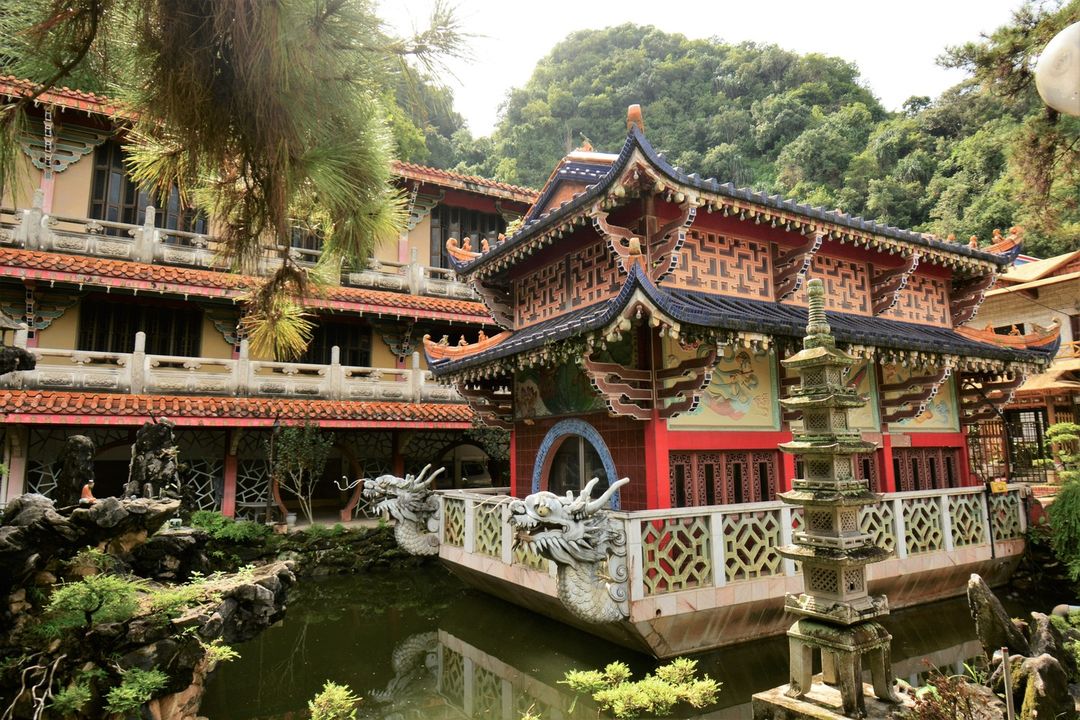
Image credit: @meandering_malaysian via Instagram
Located in Gunung Rapat, Sam Poh Tong temple stands as one of Perak’s most ancient temples built in the 1950s. Translated as “cave of triple gems”, this temple was discovered by a Buddhist monk said to have resided here until his passing 20 years later.
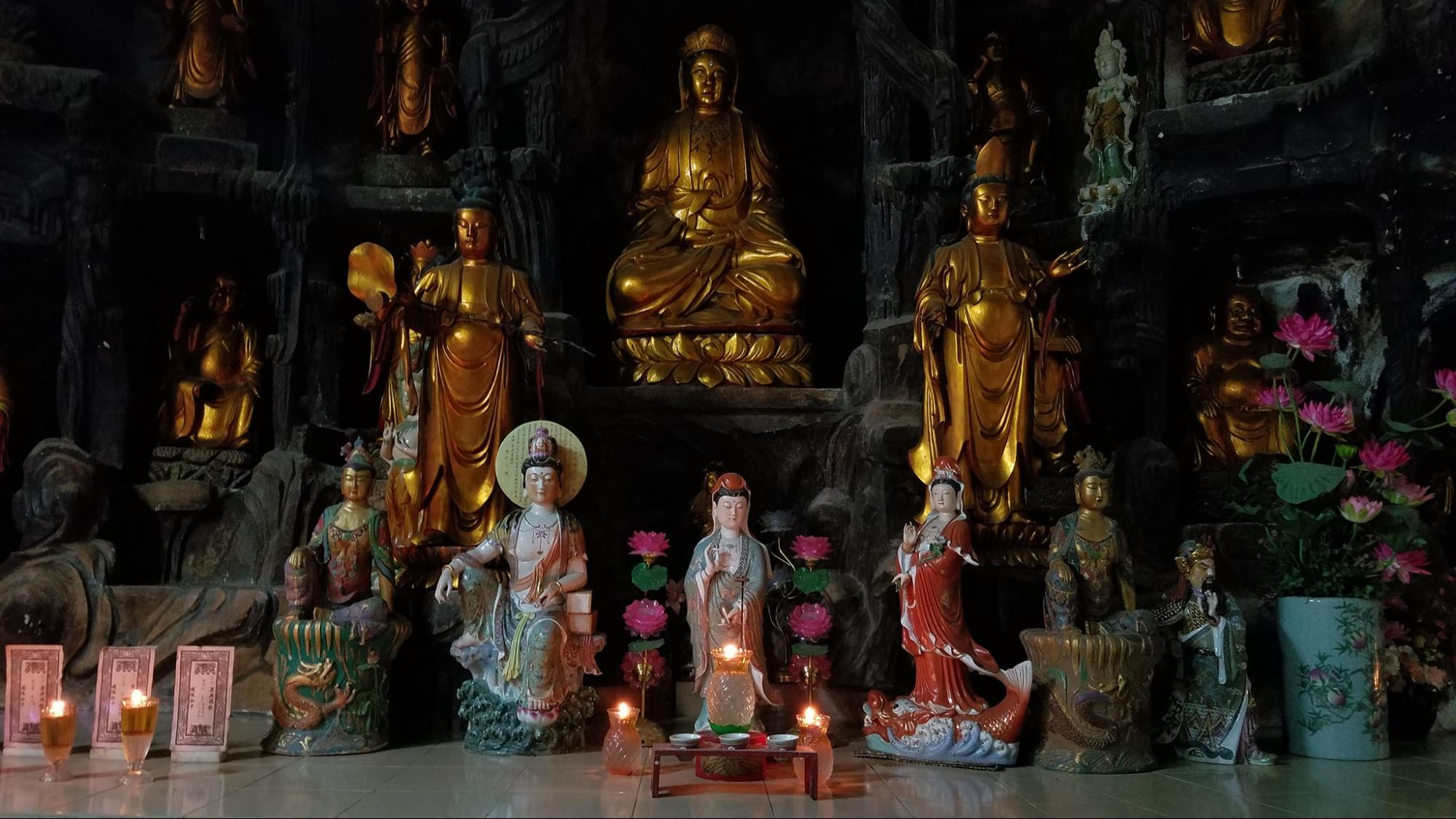
Image credit: Sam Poh Tong via Facebook
Inside, you’ll discover a main altar area accompanied by various smaller altars devoted to Chinese deities. Additionally, there are many captivating sculptures of Buddha surrounding this temple, some in stunning gold and others in full colour.
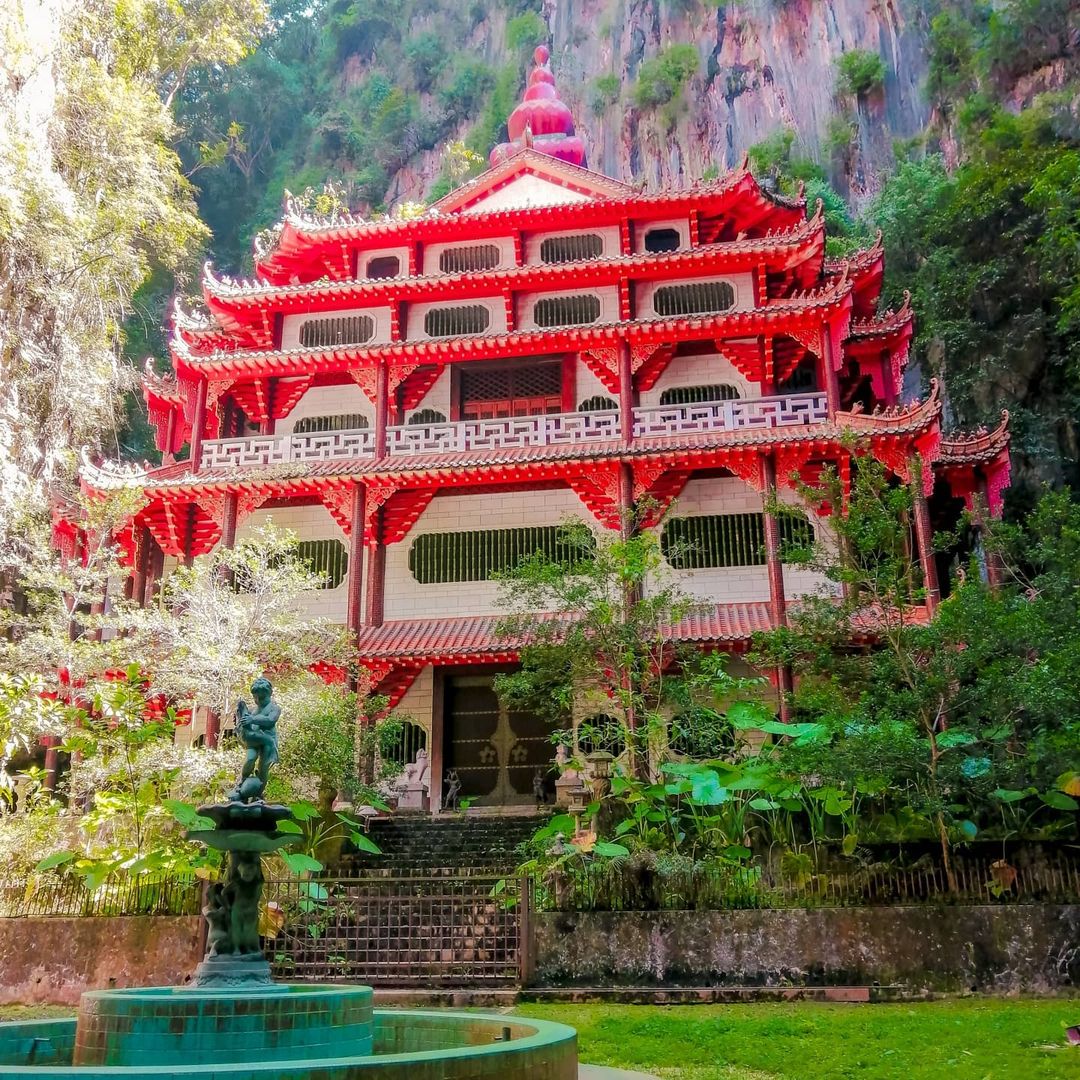
Image credit: @felicia_ramzi via Instagram
As you walk past the altar, you’ll find a striking pagoda located at the back entrance of this temple. This Chinese-style mansion surrounded by gorgeous limestones appears like an ancient Chinese palatial structure – think the ones at Forbidden City.
The opulent red structure, however, is locked, so visitors are not allowed to enter the premises. Nevertheless, you can simply sit in awe while soaking in the tranquillity offered at this mystical space at this cave temple.
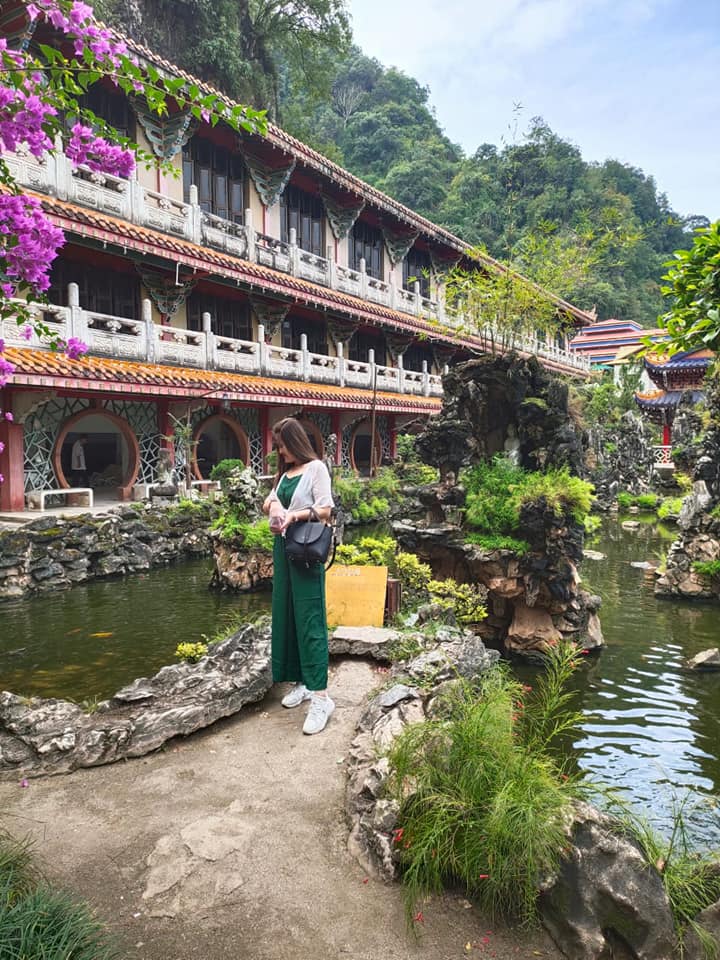
Image credit: Sam Poh Tong via Facebook
Meanwhile, right in front of this temple is a gorgeous ornamental garden decorated with bonsai trees and artificial rocks complete with a serene fish pond.
Filled with spacious pathways, you’ll find an information board that states that this garden was awarded the Best Landscaped Garden in Malaysia in 1993. Undoubtedly, the beauty of this garden remains intact and is well maintained by the temple management.
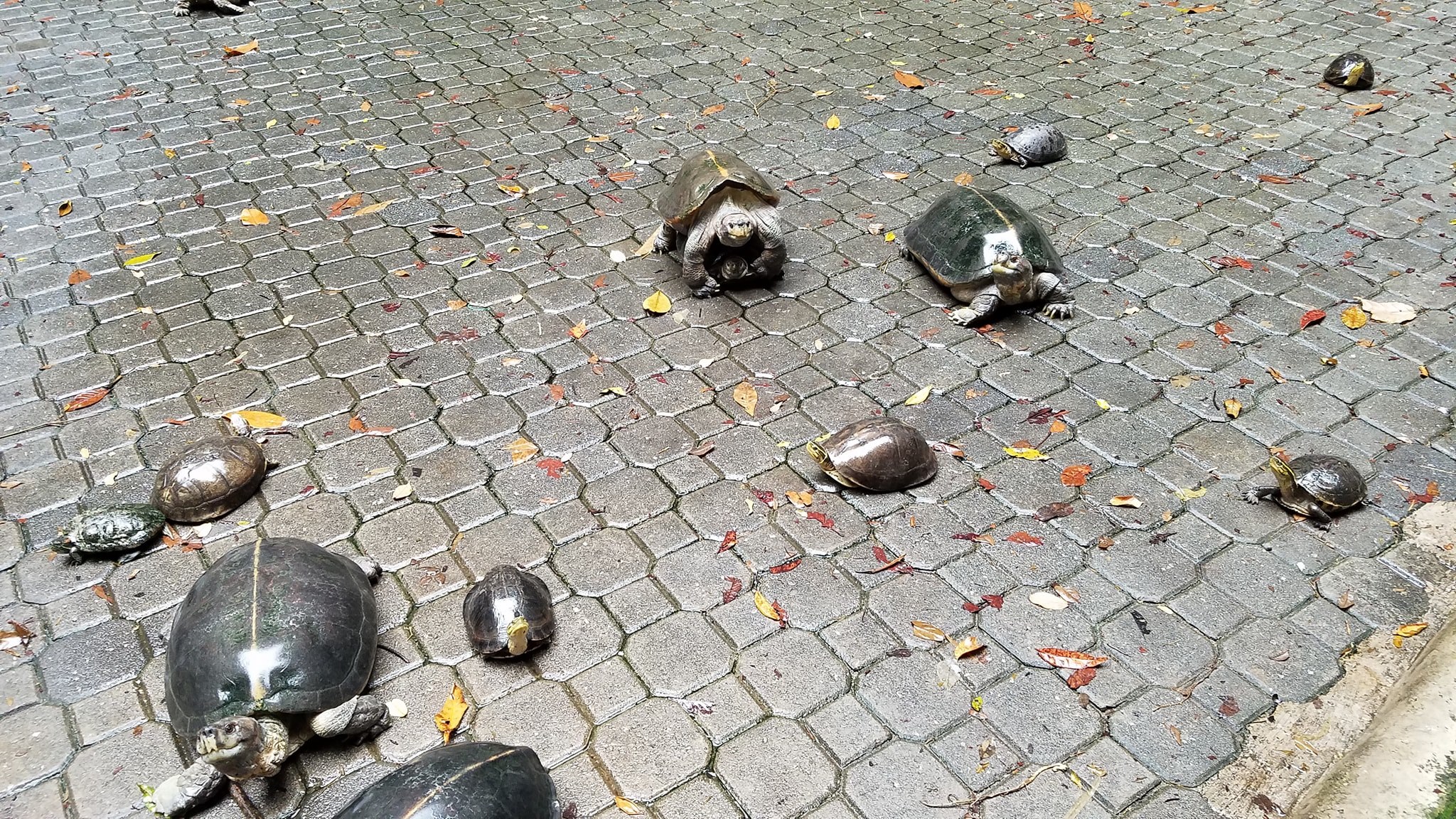
Image credit: Sam Poh Tong via Facebook
This cave temple also holds the distinction of being known as the tortoise temple, so encountering them on the premises shouldn’t come as a surprise. According to a 2009 study conducted by volunteers dedicated to turtle conservation, it was discovered that there are over 200 turtles of five native species that call the temple home.
Visitors have the privilege of feeding these adorable creatures with a piece of kangkong or other fresh produce obtainable for a small fee at the counter. This act of kindness is noted to be a symbol of good fortune, so you might not want to miss out on this during your visit here.
Address: Kampung Gunung Rapat, 31350 Ipoh, Perak
Opening hours: 9am-4pm, Daily
Contact: 05-255 2772 | Sam Poh Tong Temple Facebook
2. Kek Look Tong
Go boating on the temple’s lake
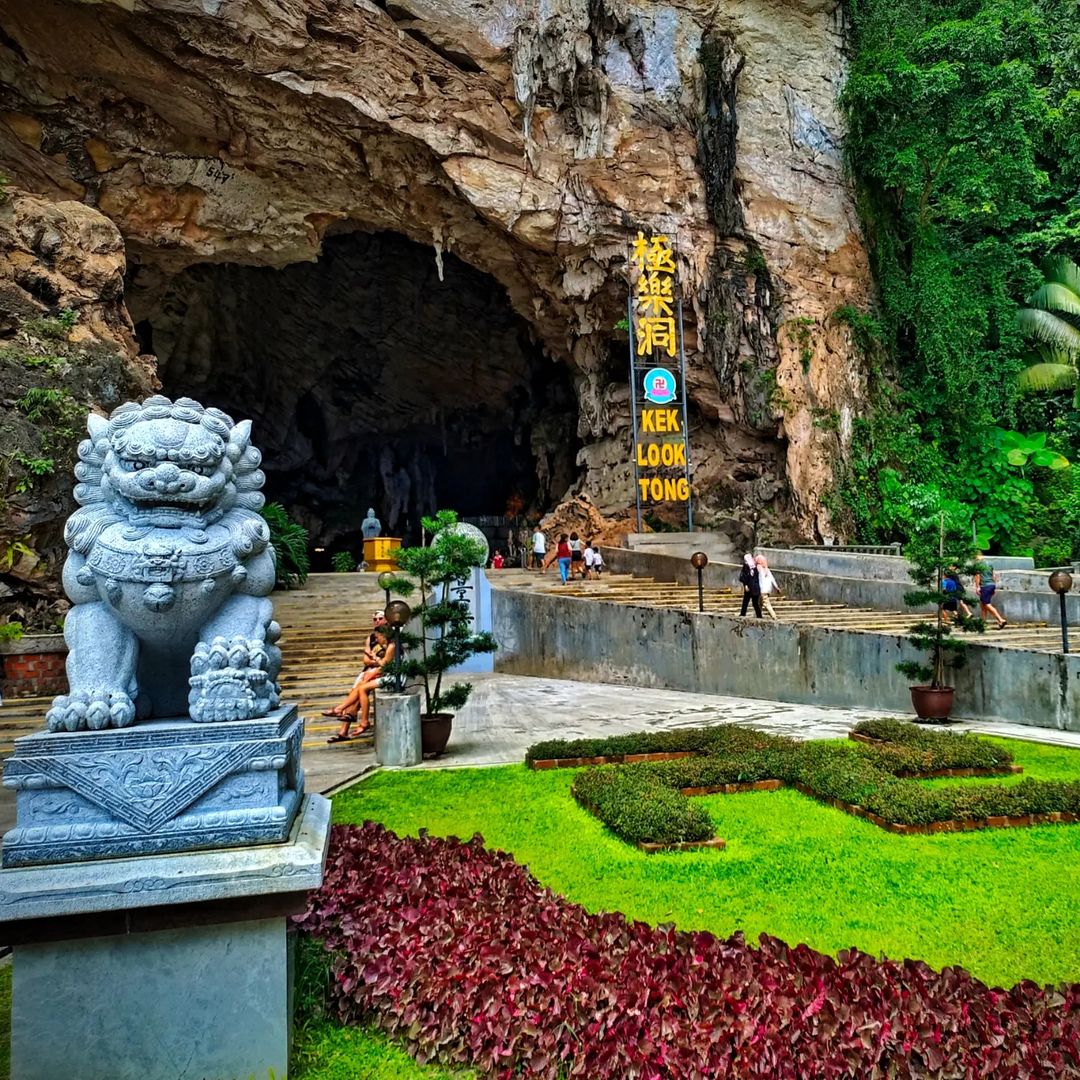
Image credit: @_lankes_phtgp via Instagram
Named the cave of ultimate bliss, Kek Look Tong temple sits at the foot of Gunung Rapat. As you approach the entrance, it’s hard to miss the impressive sight – a huge hole in the cave serves as a unique doorway into this temple, accompanied by a statue of the Chinese guardian lion.
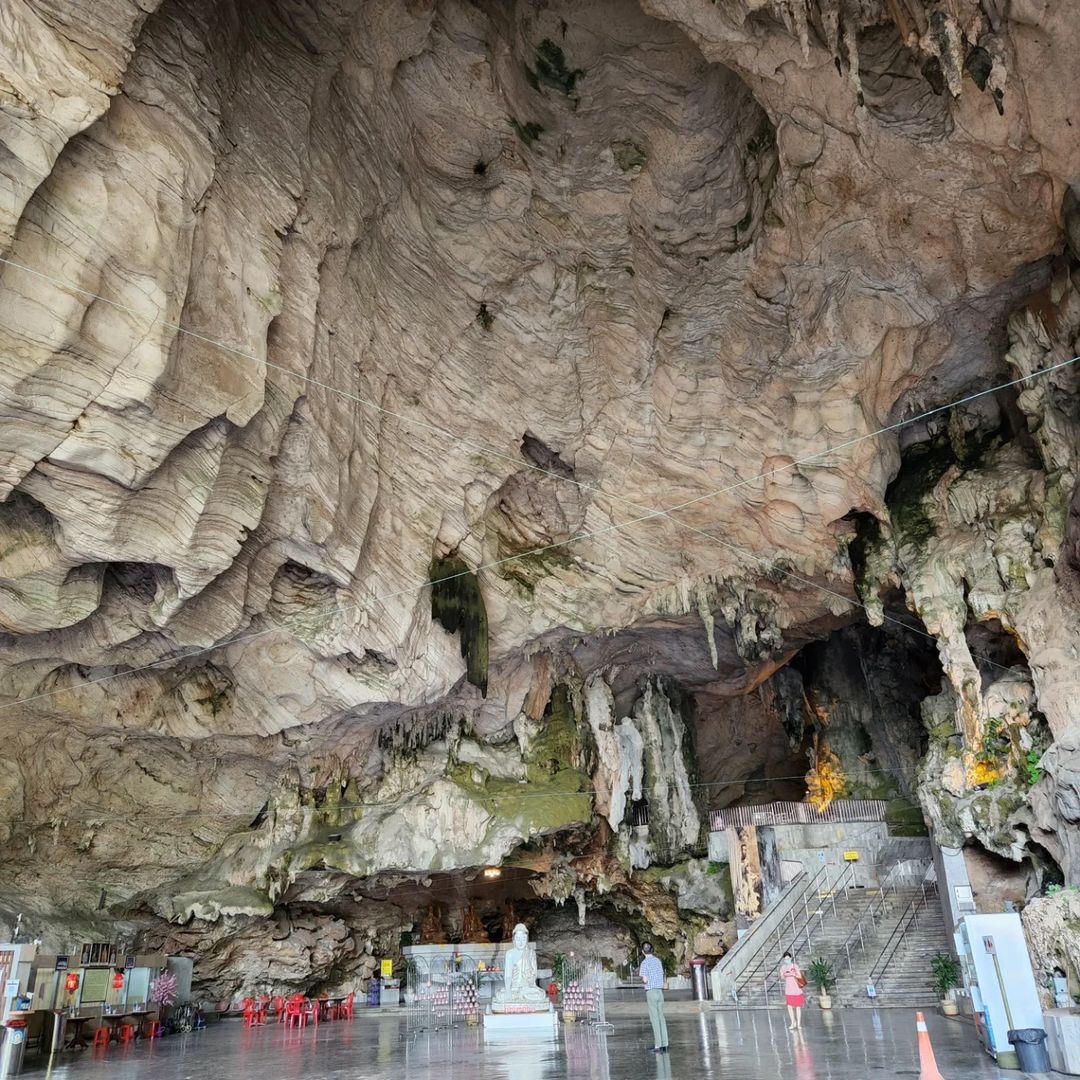
Image credit: @mishyree via Instagram
Enter this cavernous temple, and you’ll discover a spacious main prayer hall surrounded by limestone formations such as stalactites and stalagmites. Multiple stairs lead you to designated smaller prayer halls dedicated to Taoist deities, so take your time to explore them thoroughly during your visit here.
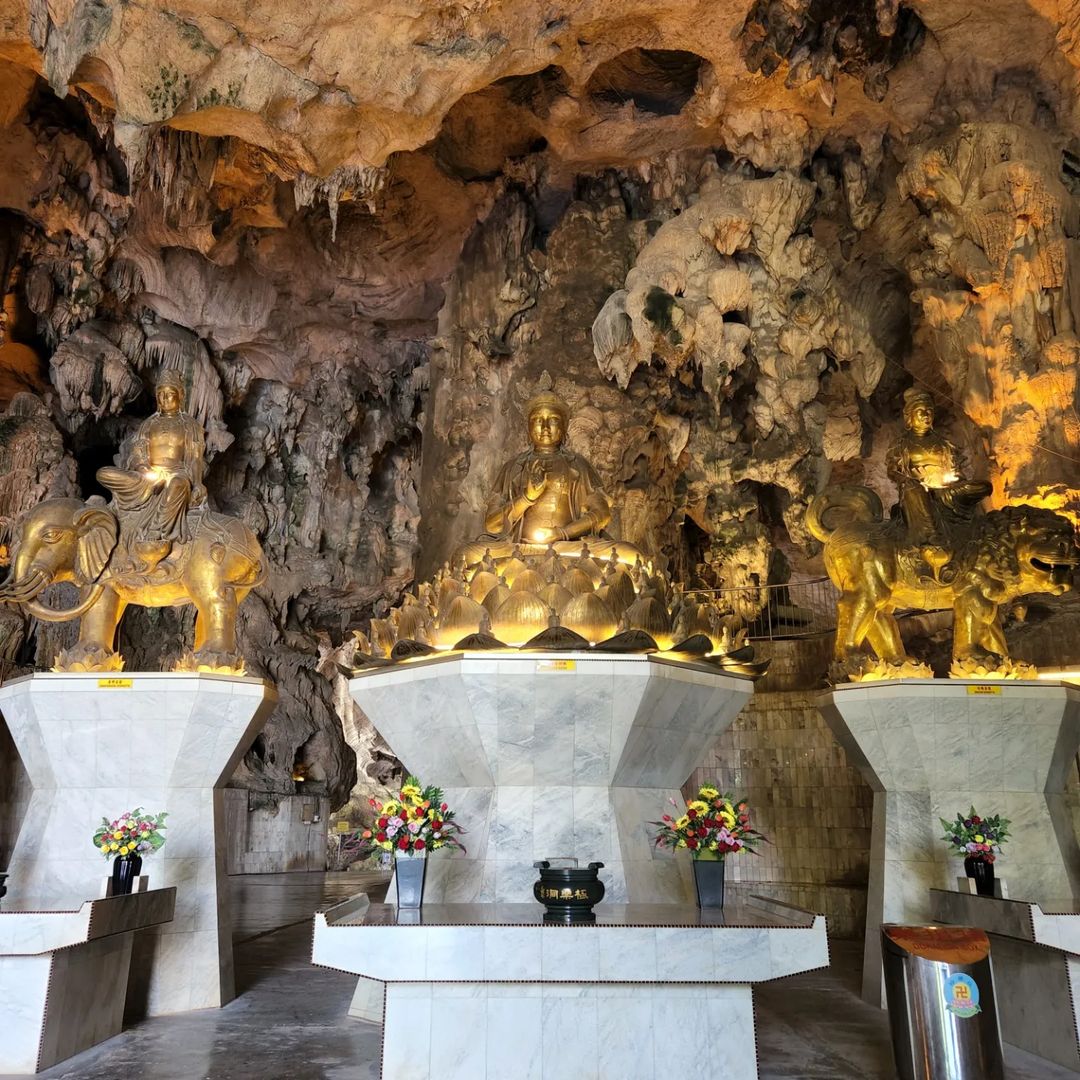
Image credit: @mishyree via Instagram
Within one of the smaller alcoves, you’ll come across three gold statues neatly arranged atop an impressive marble altar table. Set against the backdrop of pointed rock formations suspended from the cave ceiling, this altar has a unique charm that sets it apart from the more common features of traditional Chinese temples.
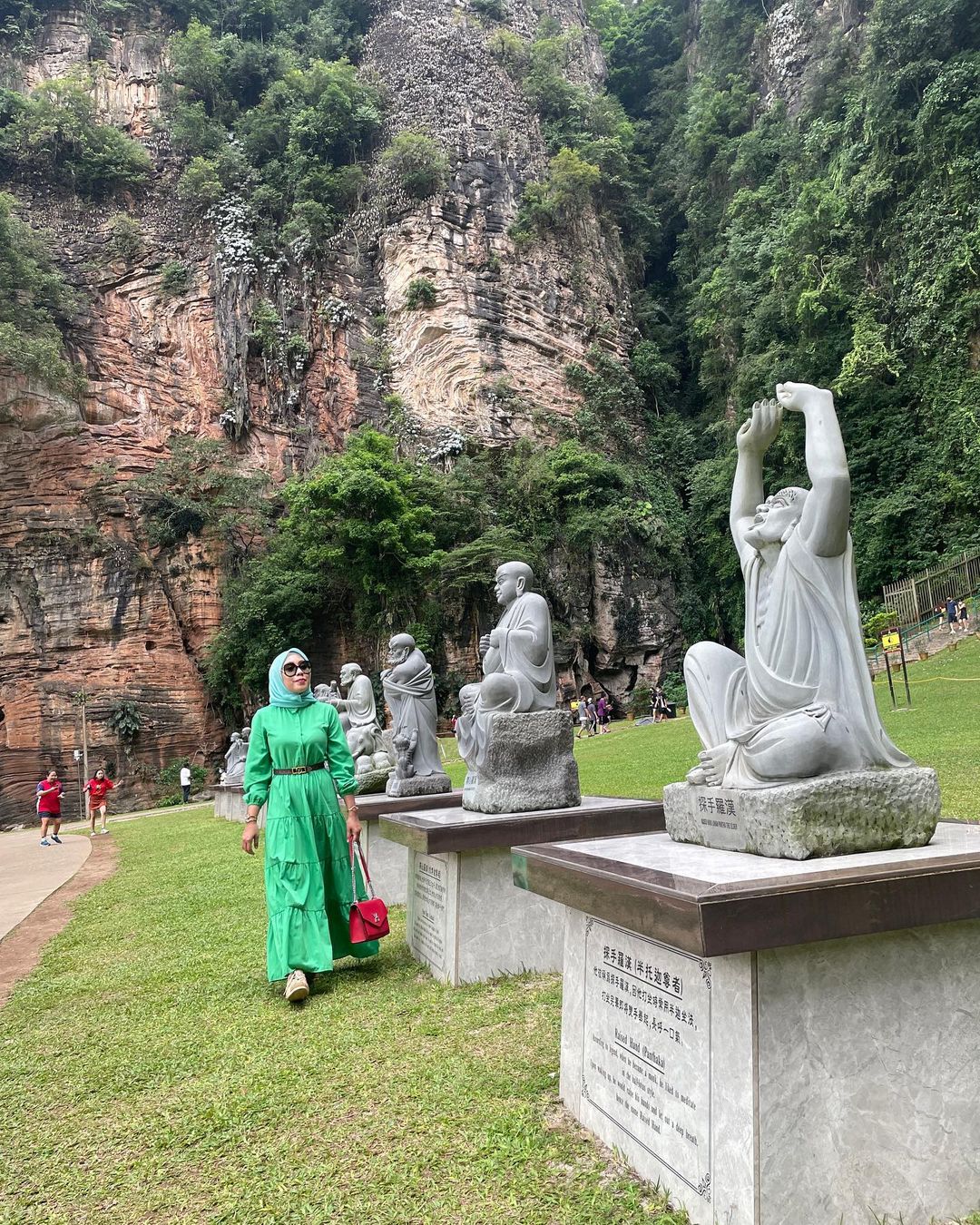
Image credit: @aidarahim_ar via Instagram
At the back of this cave temple lies a splendid zen garden, which is a favoured spot for joggers residing in the vicinity. Here, you’ll discover the statues of the 18 Luohans, who were Buddha’s original disciples. Additionally, this garden boasts a reflexology path and public benches offering respite if you need to rest your feet or need a quick moment of repose.
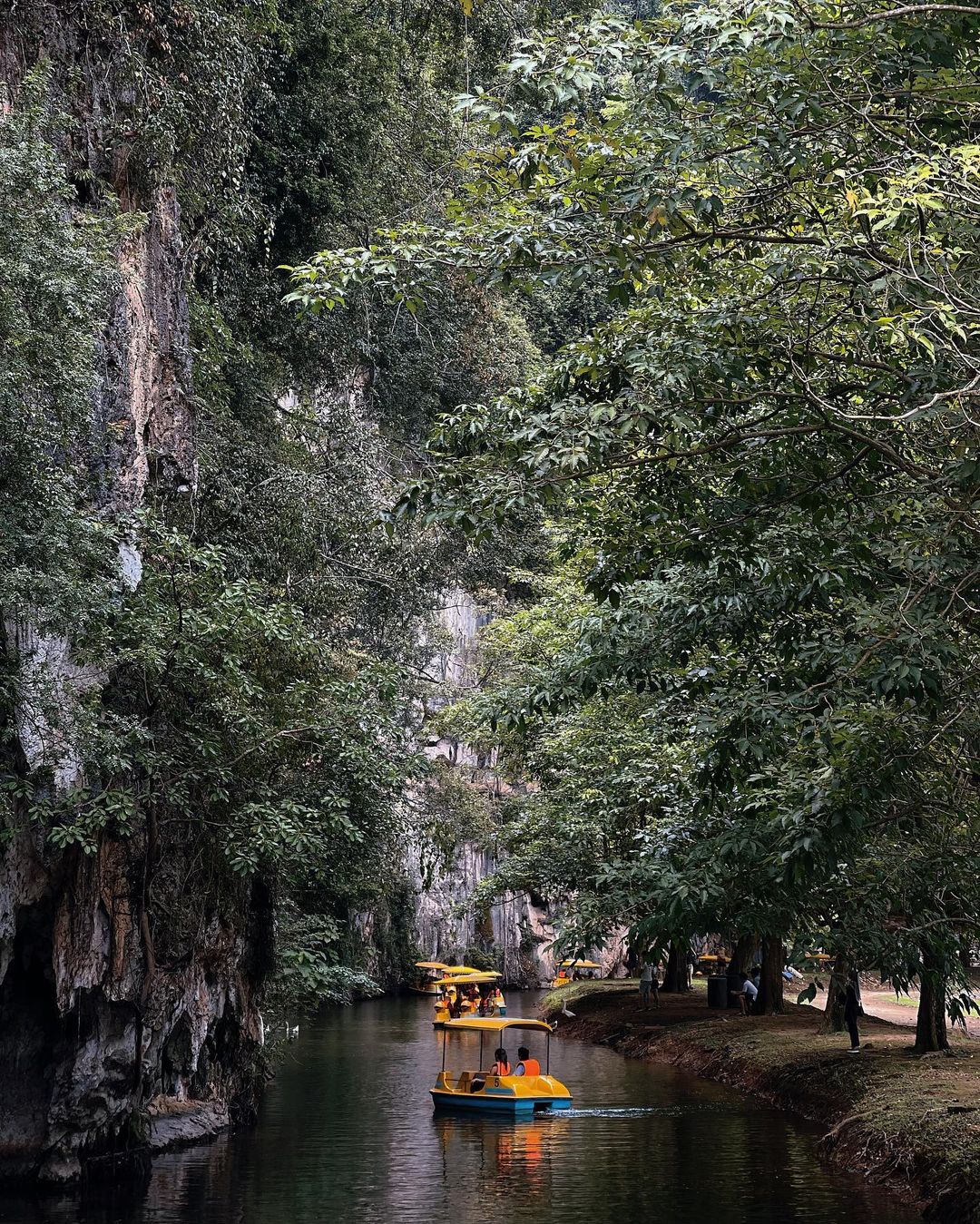
Image credit: @_milokong_ via Instagram
Another interesting activity not to miss is boating by the temple’s lake. For a payment of RM12 for two pax, you get to enjoy a 30-minute boat ride. However, do keep in mind that the boat activity is closed on Tuesdays.
Address: Persiaran Sepakat 3, Taman Endah Jaya, 31350 Ipoh, Perak
Opening hours: 8am-4.30pm, Daily
Contact: 05-312 8112 | Kek Look Tong Facebook
3. Miaw Yuan Chan Lin Temple
A larger-than-life monk statue
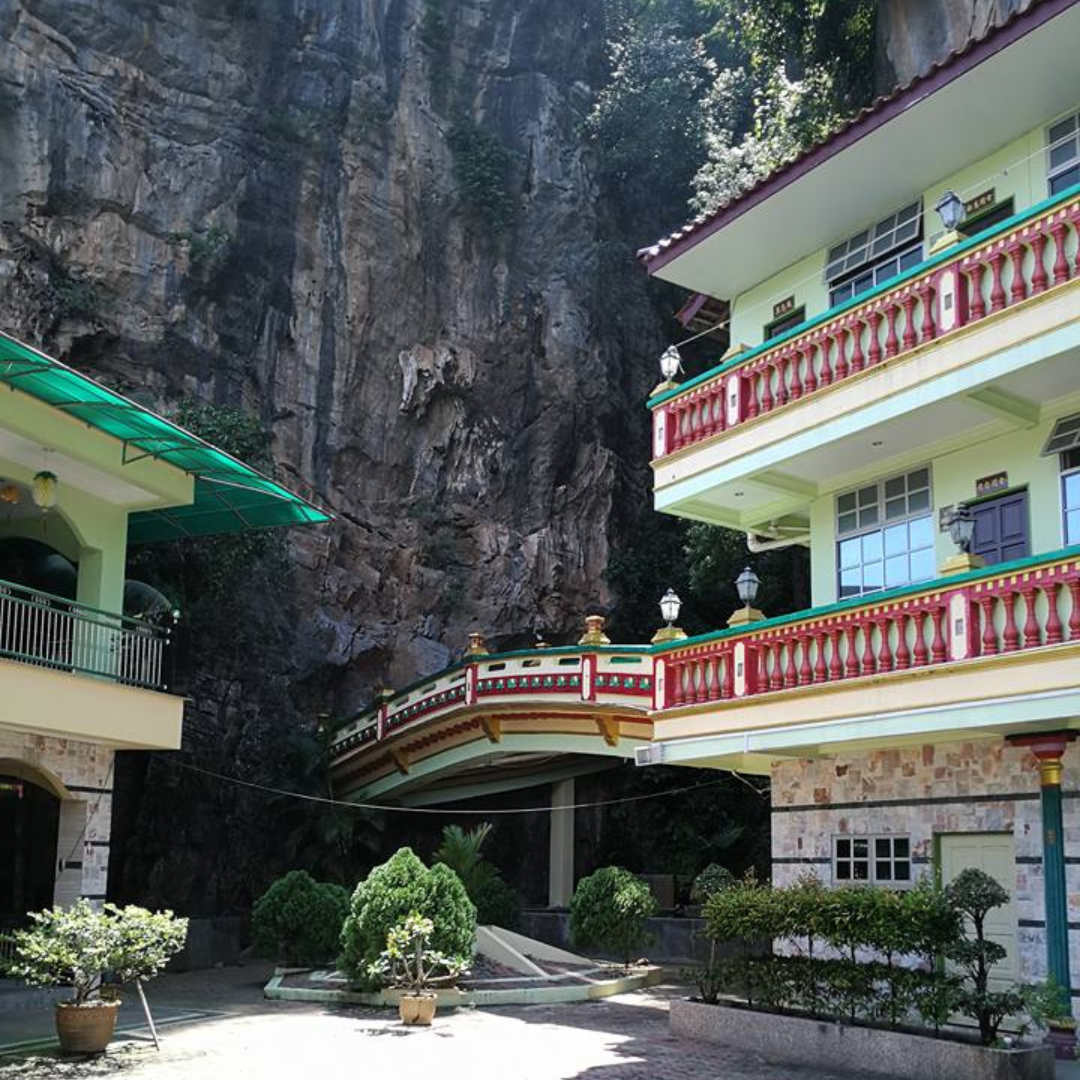
Image credit: Miaw Yuan Chin Temple via Facebook
At first glance, the entrance to Miaw Yuan Chan Lim may not resemble a Chinese temple, as it practises Buddhism as observed in Thailand. Unlike the usual Chinese architectural style of most temples that boast pavilions and statues, this lesser-known temple is dedicated to Theravada Buddhism, so it’s no surprise that you may feel doubtful upon your arrival here.
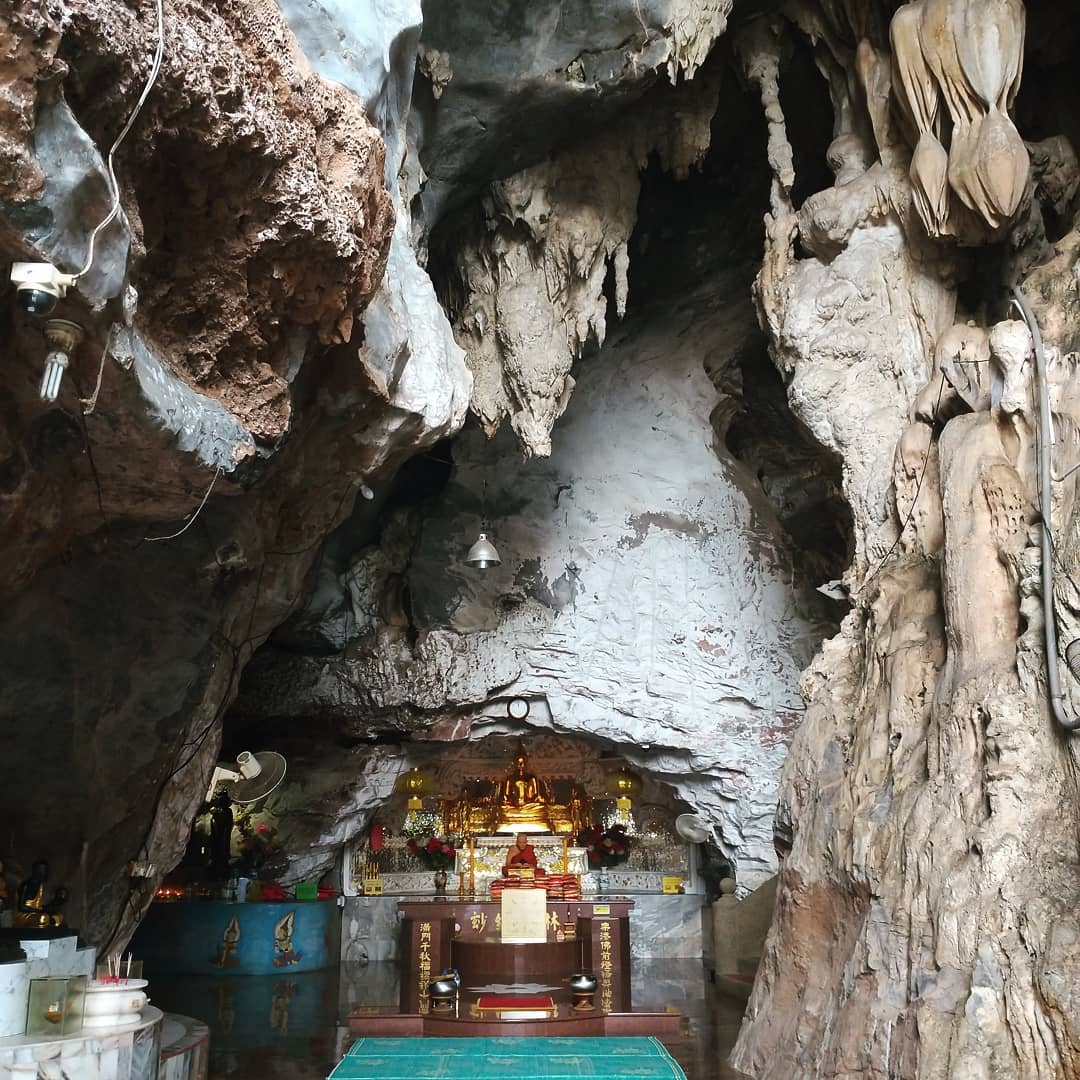
Image credit: @erisgoesto via Instagram
As you walk further in, you’ll spot the common sight of Buddhist deities situated at the altars surrounding this temple.
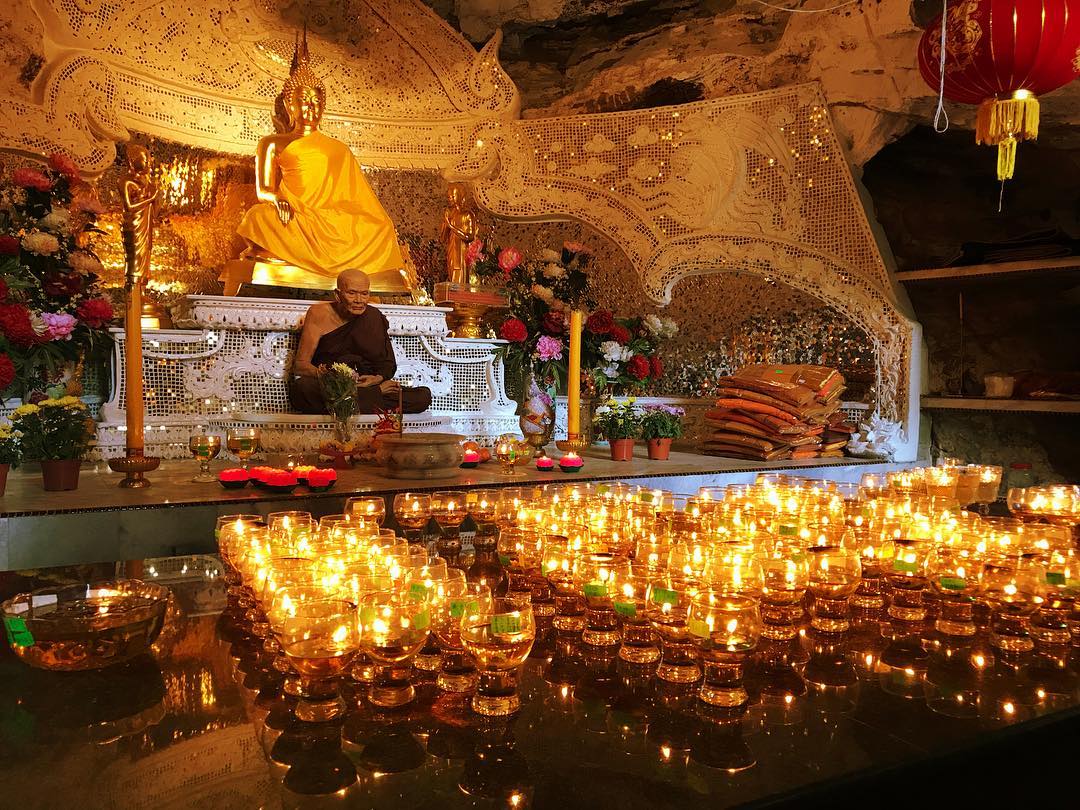
Image credit: @photogenic_vibe via Instagram
Practitioners seek refuge in the triple gem – the enlightened teacher Buddha, the profound teachings known as dhamma, and Sangha which encompasses the community of monks and nuns. At the altar, lighted candle cups are neatly placed as a gesture of offering to the devotees’ revered monks.
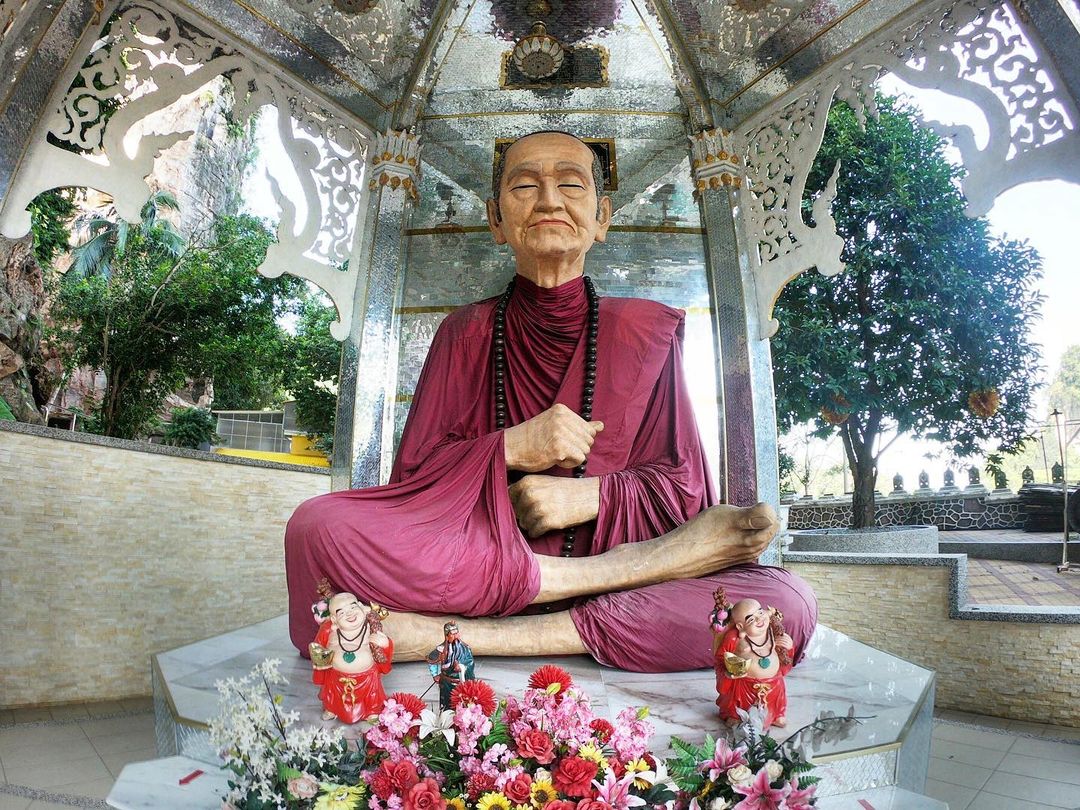
Image credit: @clickonetrip via Instagram
In the courtyard, a larger-than-life and realistic monk statue is hard to miss. The monks in Thailand practise the importance of collecting good karma, holding to the Buddhist philosophy which values suffering.
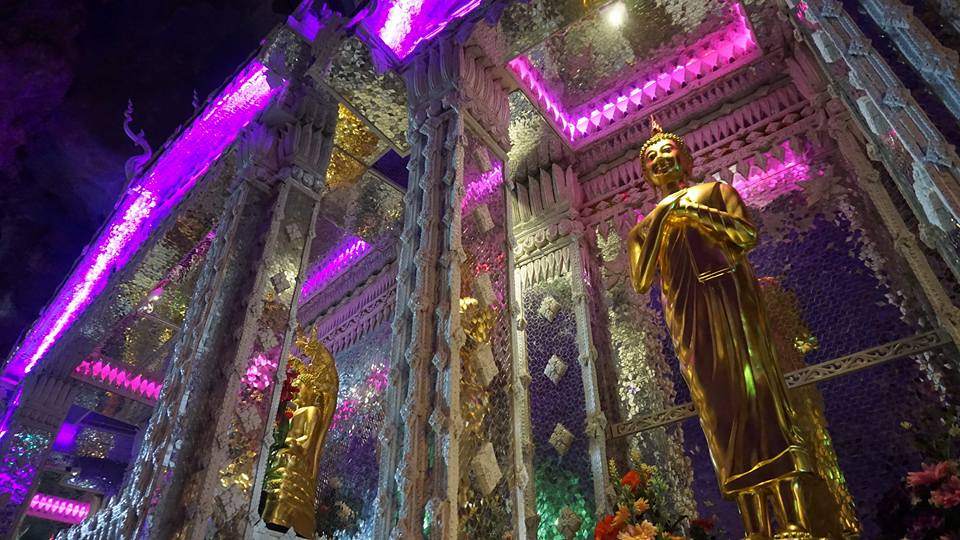
Image credit: Miaw Yuan Chin Temple via Facebook
Move further inside this temple, and you’ll notice vivid neon-lit shrines housing an assembly of seven Buddhas. Each statue strikes a unique posture symbolising a day of the week. This arrangement is a customary sight, which could be seen predominantly in Buddhist temples in Thailand.
Address: 22, Persiaran Pinggir Rapat 5A, Rapat Setia, 31350 Ipoh, Perak
Opening hours: 9am-5pm, Daily
Contact: Miaw Yuan Chan Lin Temple Facebook
4. Ling Sen Tong Temple
Vibrant display of statues from Chinese mythology
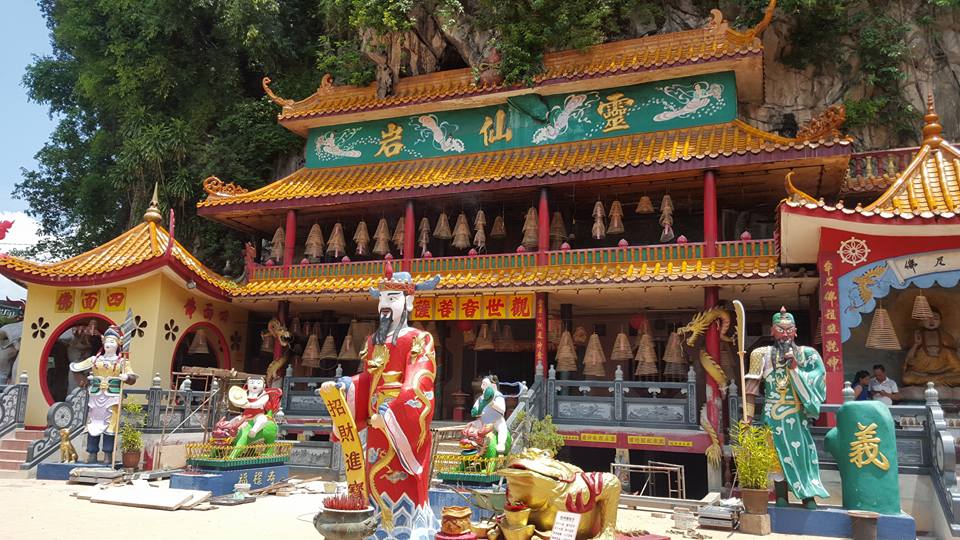
Image credit: Ling Sen Tong Temple via Facebook
Built during the late 1960s, the Ling Sen Tong Temple stands as one of the three temple complexes nestled in Gunung Rapat. As you step through the entrance, a vibrant display of statues from Chinese mythology beckons you to explore their intricate details and the cavernous space within.
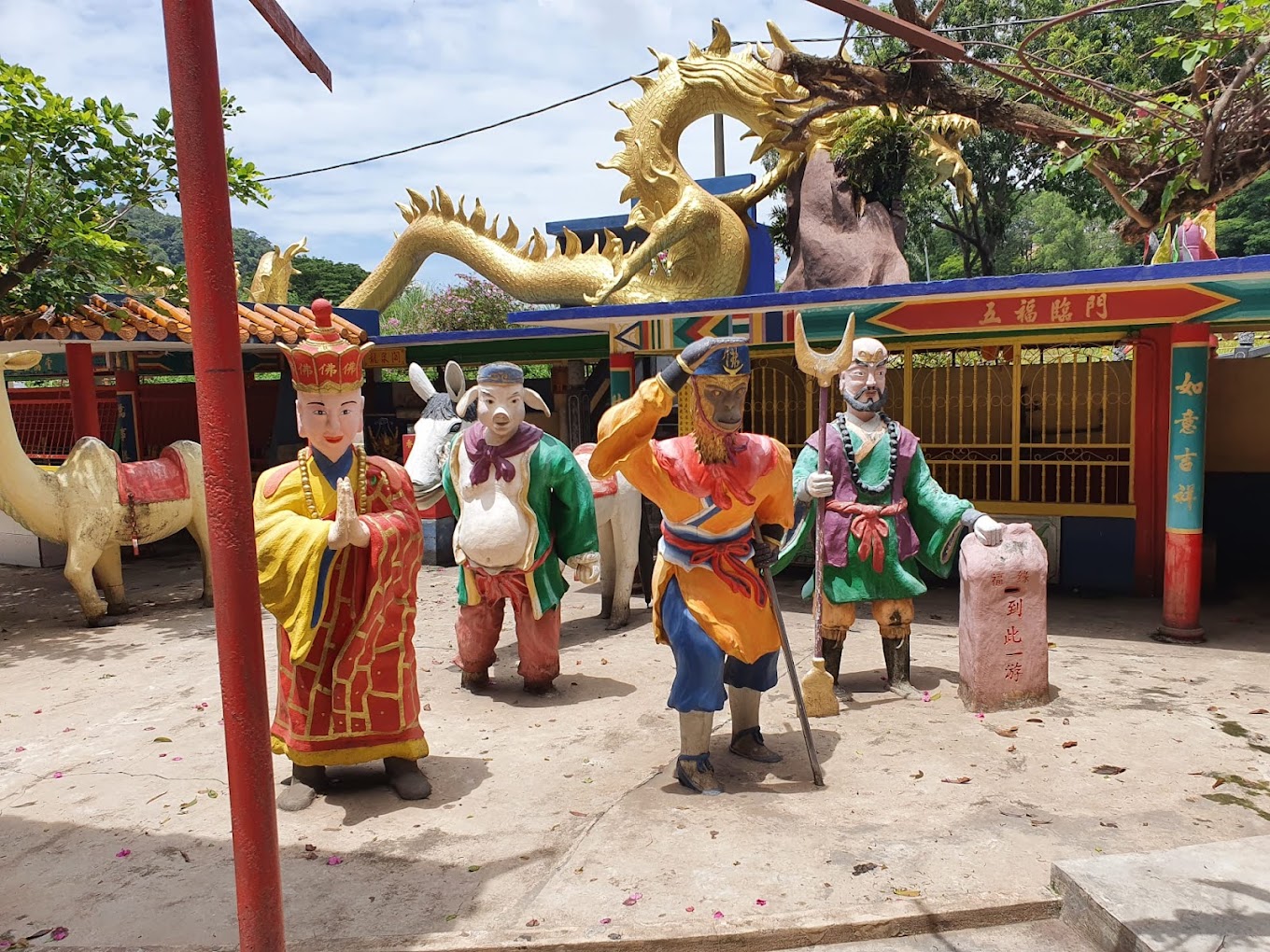
Image credit: Richard Tan via Google Maps
Referred to as the “rock of heavenly spirits”, this cave temple is frequently likened to a fanciful theme park, thanks to its array of colourful Chinese statues scattered throughout the temple grounds. One area in particular features a collection of figures of a monk, a pig, and a warrior – these are none other than the iconic protagonists from the timeless Chinese folklore classic, Journey to the West.
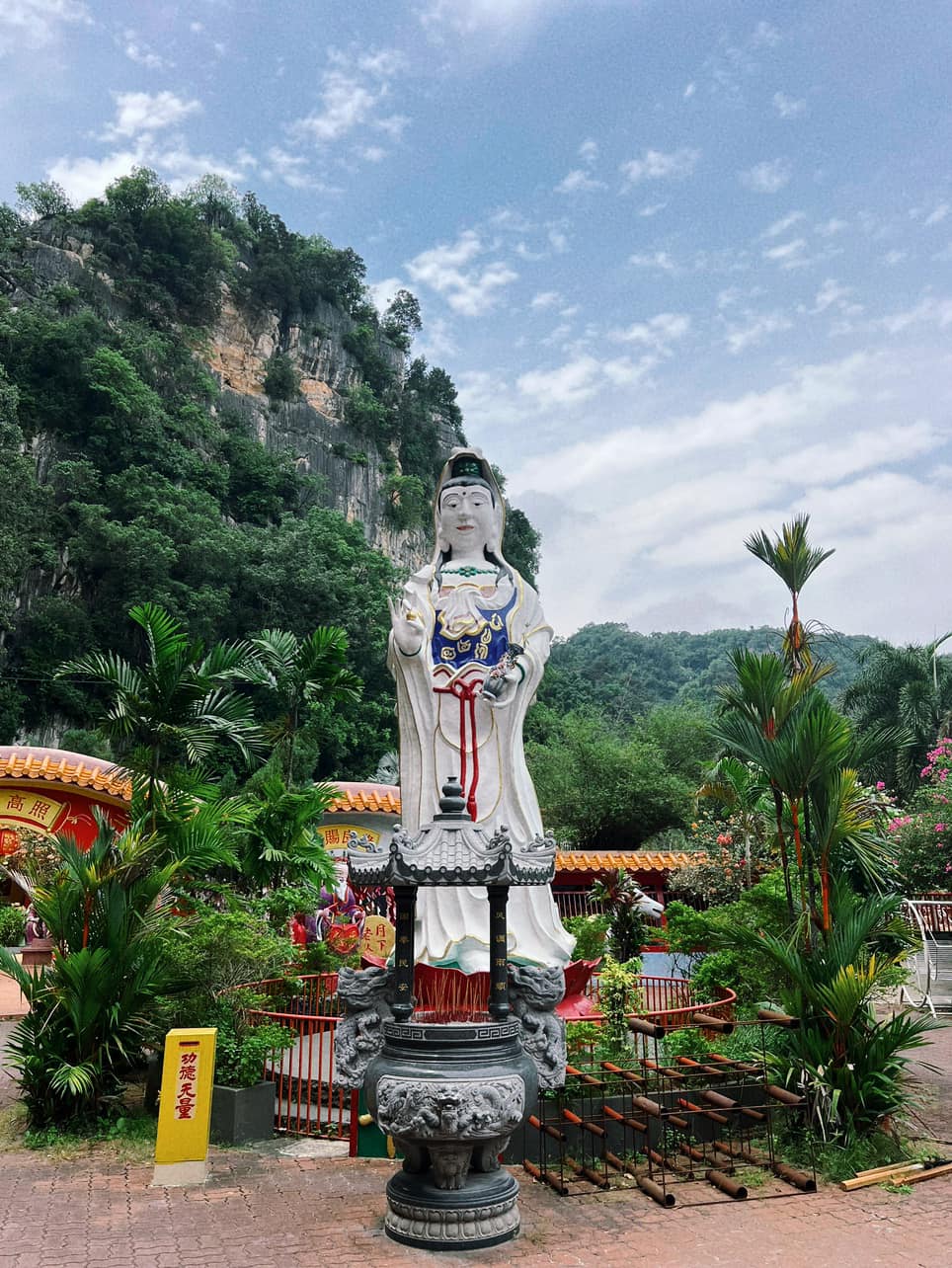
Image credit: Dennis Chong via Facebook
Worshipped as the main deity in this temple is Guan Yin, so it doesn’t come as a surprise to see this statue of the goddess taking centre stage outside this temple.
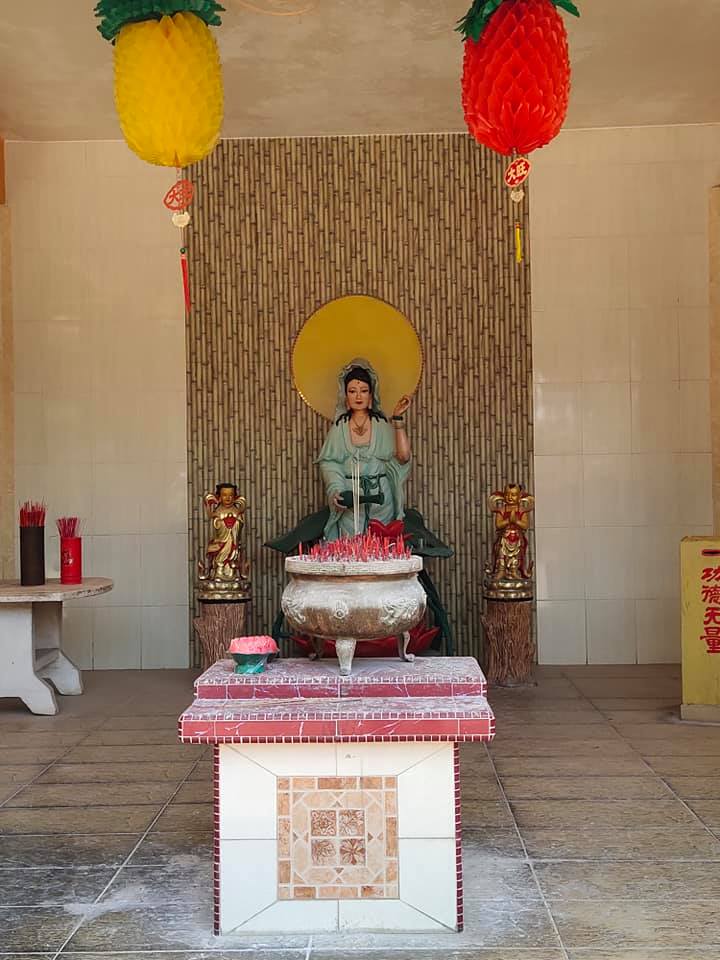
Image credit: Ling Sen Tong Temple via Facebook
Additionally, within the temple’s interior, a more spacious altar dedicated to the venerated goddess awaits devotees. The goddess is adorned in a green dress and a yellow halo, accompanied by two children who came to her when she was meditating at Mount Putuo.
Address: Gunung Rapat, 31350, Ipoh
Opening hours: 9am-4pm, Daily
Contact: Ling Sen Tong Facebook
5. Dong Hua Cave Temple
A hidden chamber for meditation
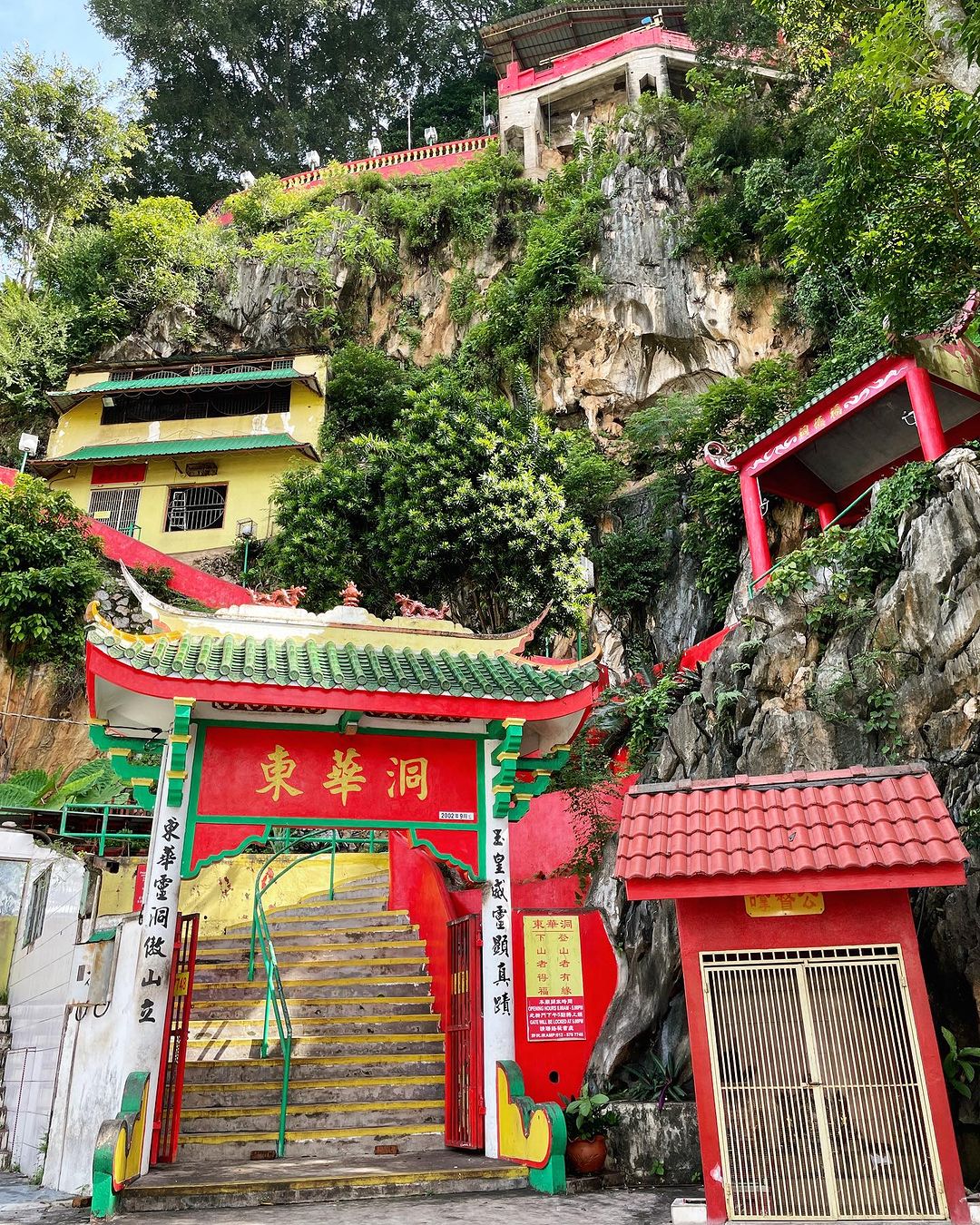
Image credit: @zacherycsc via Instagram
Nestled in the far corner of an industrial area, Dong Hua Cave temple stands as a hidden treasure within Ipoh that is relatively undiscovered by many. Perched atop a limestone cave, this temple is known as one of Ipoh’s oldest Taoist temples. You’ll need to walk up a flight of stairs to enter this temple, so it’s advisable to wear comfortable shoes during your visit here.
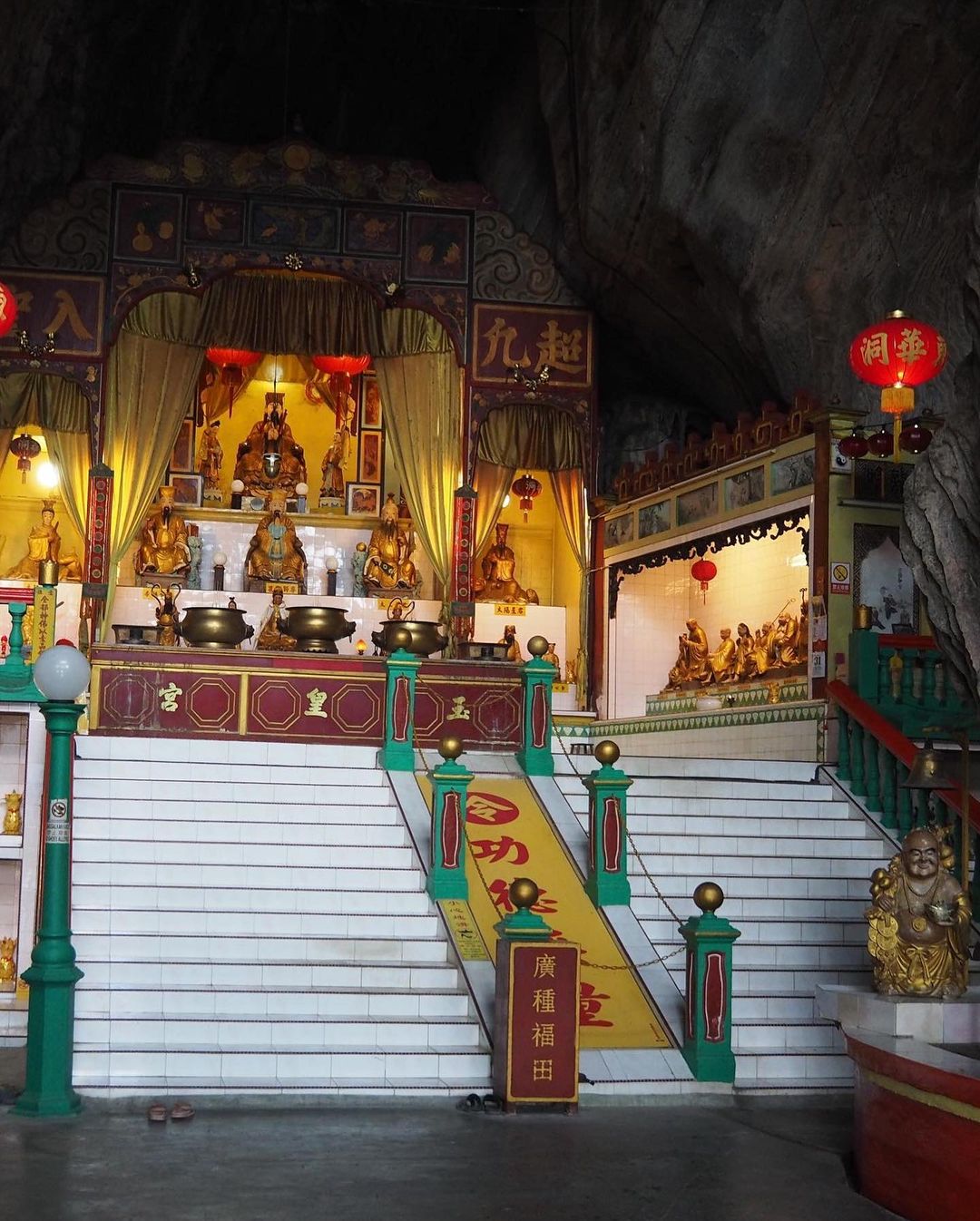
Image credit: @mshian63 via Instagram
There are two distinct structures at this temple. The first one is tucked within a cavern devoted to the Buddhist monk, Xuanzang. In the second temple, you’ll find a grand altar dedicated to Taoist deities. Visitors are required to remove their shoes before ascending the flight of stairs to reach the grand altar.
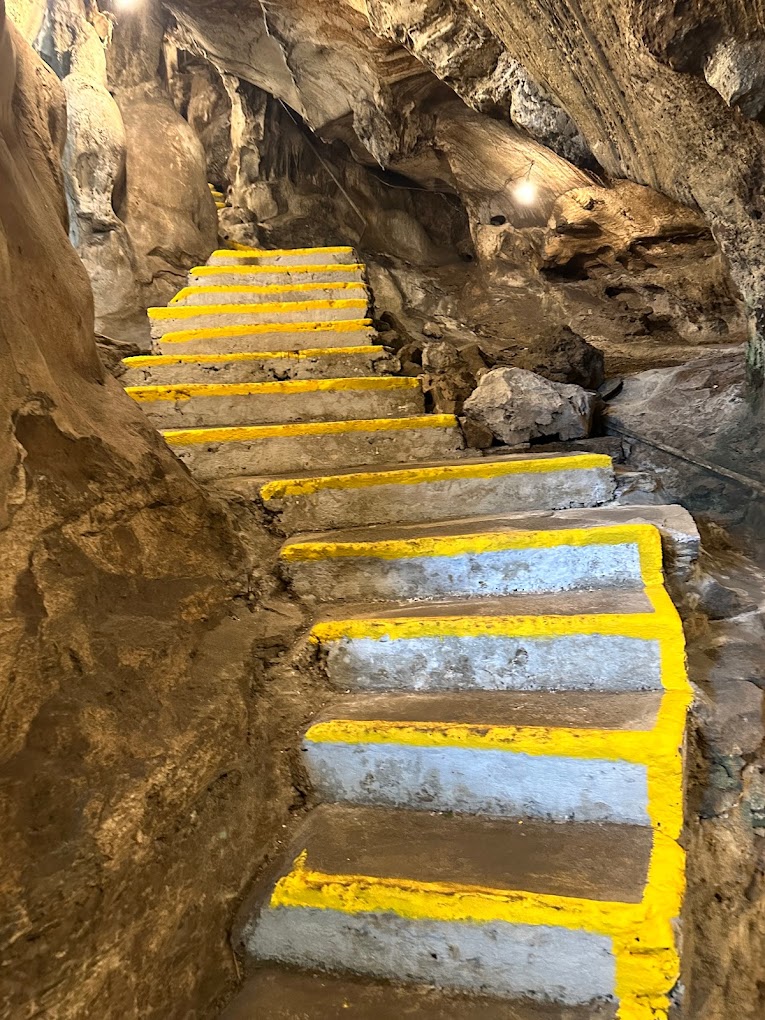
Image credit: SK via Google Maps
On your way back down, you’ll notice another set of stairs at the corner of this cave temple. This pathway will lead you to a hidden chamber for meditation. Inside, devotees and meditative practitioners can engage in tranquil contemplation. So if you’re interested in spending time meditating, you might want to spend longer hours during your visit here.
Address: Lot 26006, Hala Perindustrian 1, Taman Bistari, 31400 Ipoh, Perak
Opening hours: 8am-5pm, Daily
Contact: 012-578 7748 | Dong Hua Cave Temple Facebook
6. Nam Thean Tong Temple
Eye-catching murals drawn on rocks
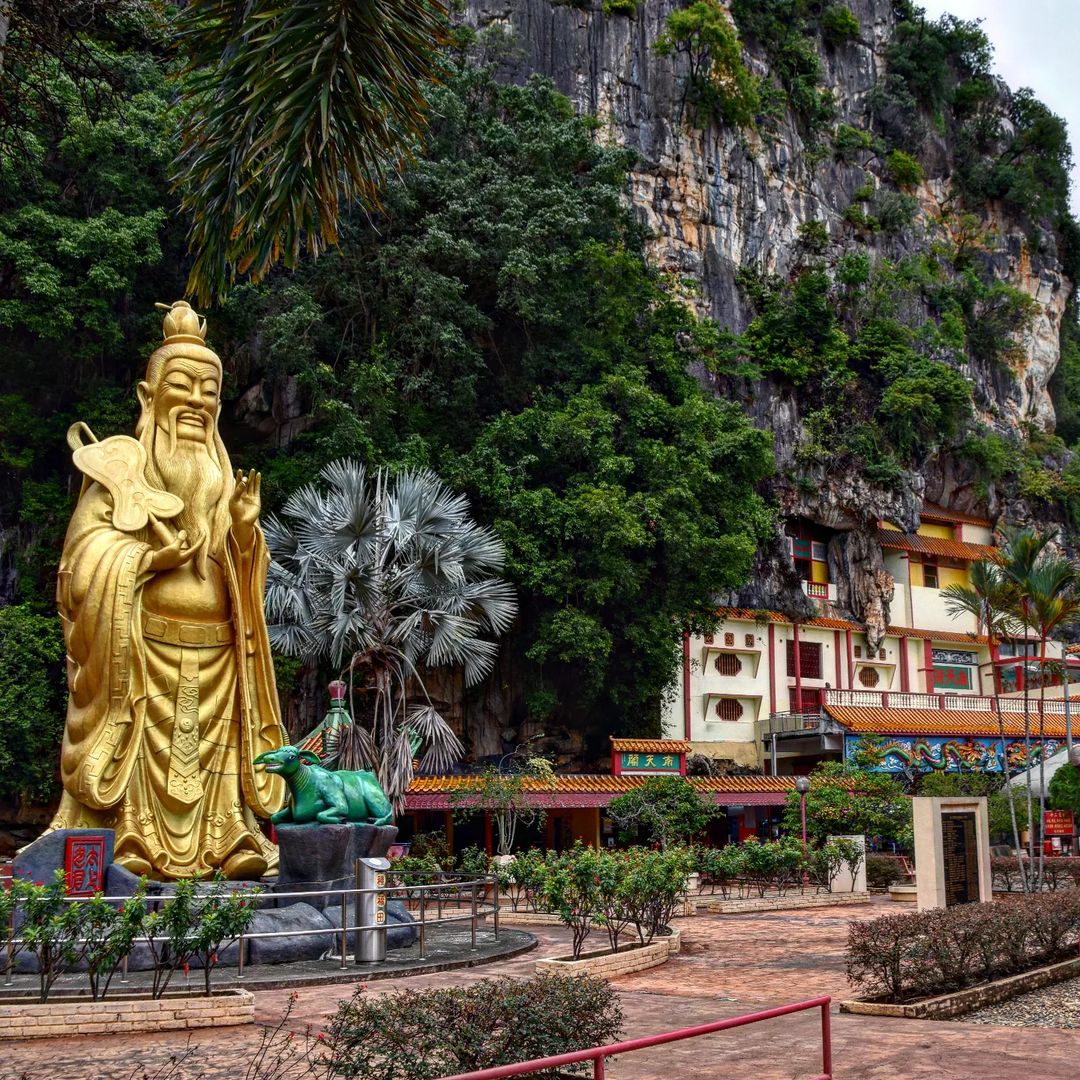
Image credit: @cle_bre via Instagram
Nam Thean Tong stands as one of the most well-known temples within Ipoh and is particularly cherished by Taoist devotees. The main deity enshrined at the entrance is none other than the Supreme Patriarch of Taoism, Lao Tzu.
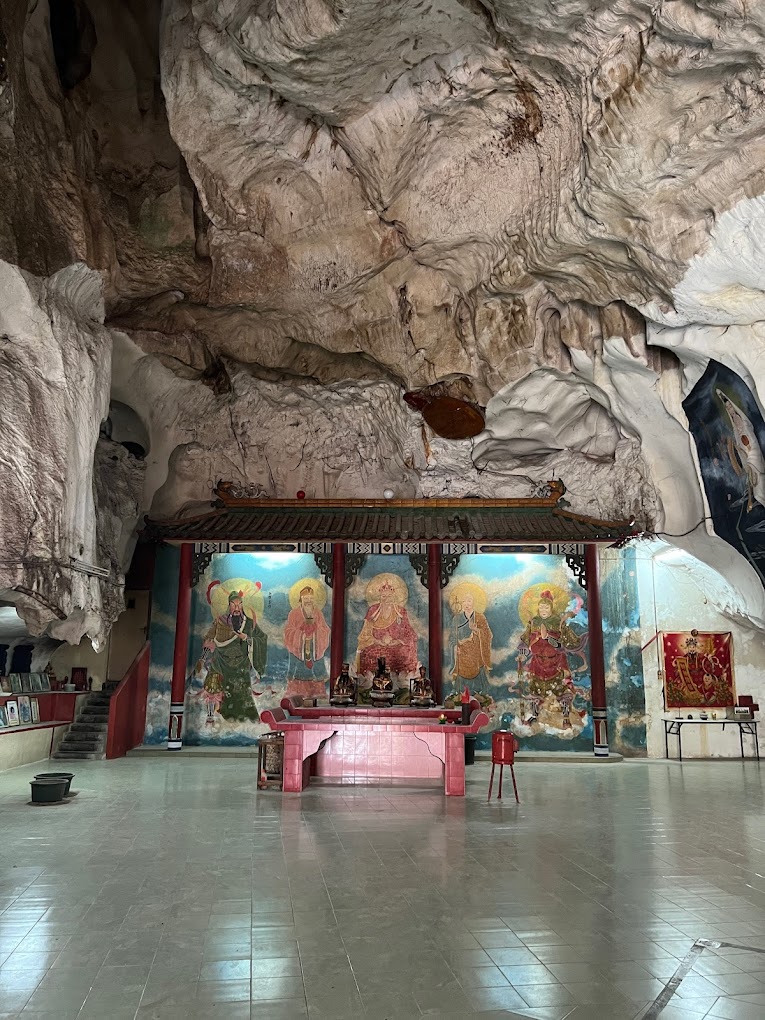
Image credit: P via Google Maps
As you step inside, the main altar immediately catches your attention from a distance. However, it’s the eye-catching murals directly painted onto rock surfaces that truly steal the spotlight with their vibrant and visually striking displays.
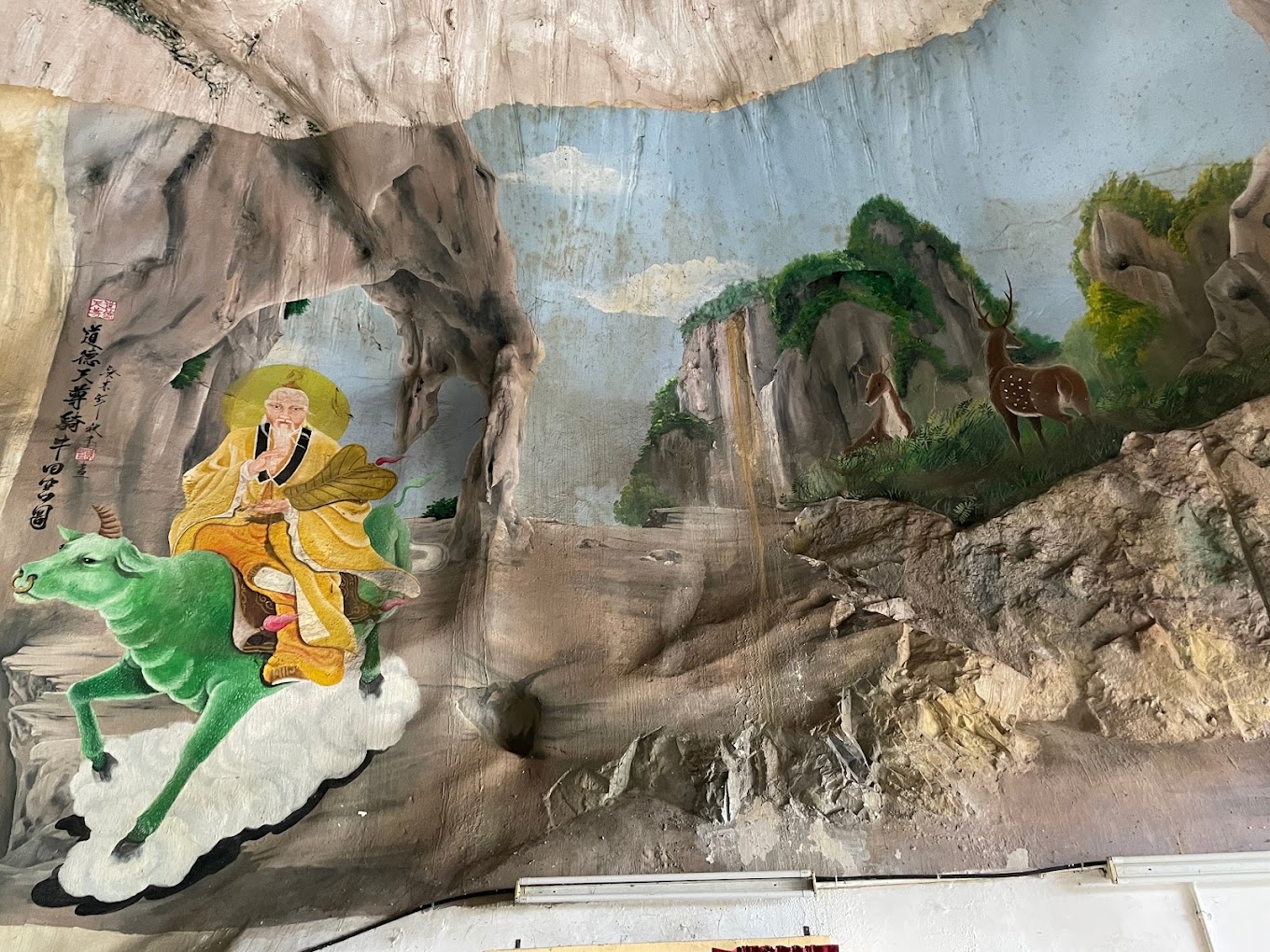
Image credit: Dimitris Travel And Tips via Google Maps
As you continue to explore the temple’s interior, you’ll observe an array of additional murals adorning the cave walls. Each mural serves as a visual portal into the rich narratives that shape Taoist mythology and folklore.
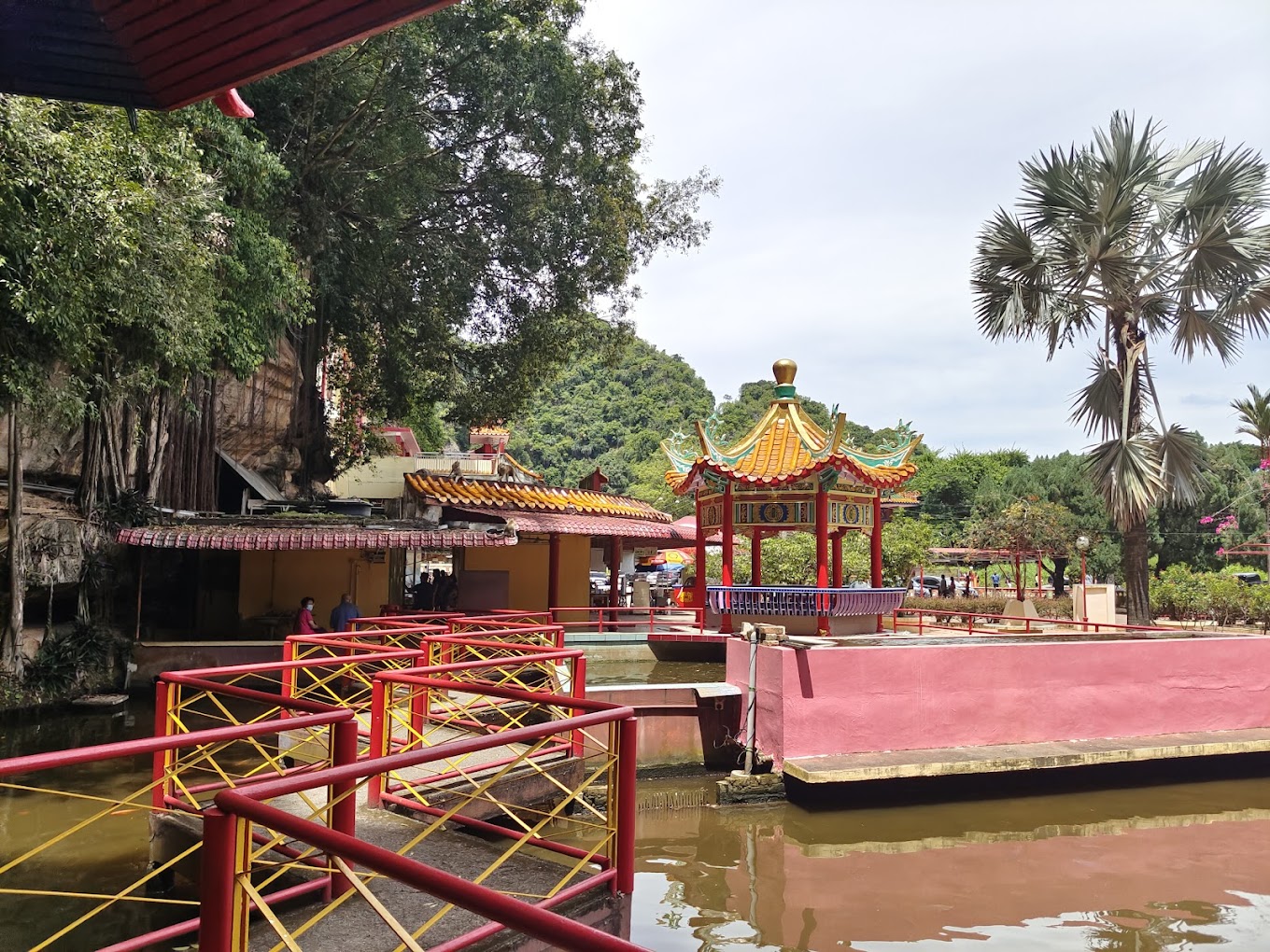
Image credit: bl tan via Google Maps
Outside this temple, you’ll find a lake at the farthest corner that comes into view. Accompanied by a winding zigzag pathway, this path guides you to a floating Chinese-style pagoda with a vibrant tiered roof that serves as a passage to an adjacent mini shrine positioned at the temple’s furthest end. While perhaps not as immediately attention-grabbing, these areas warrant a leisurely stroll during your visit here.
Address: Jalan Raja Dr Nazrin Shah 1, 31350, Ipoh, Perak
Opening hours: 8am-4.45pm, Daily
Contact: Nam Thean Tong Temple Facebook
7. Perak Tong Temple
A pagoda offering panoramic views of Ipoh
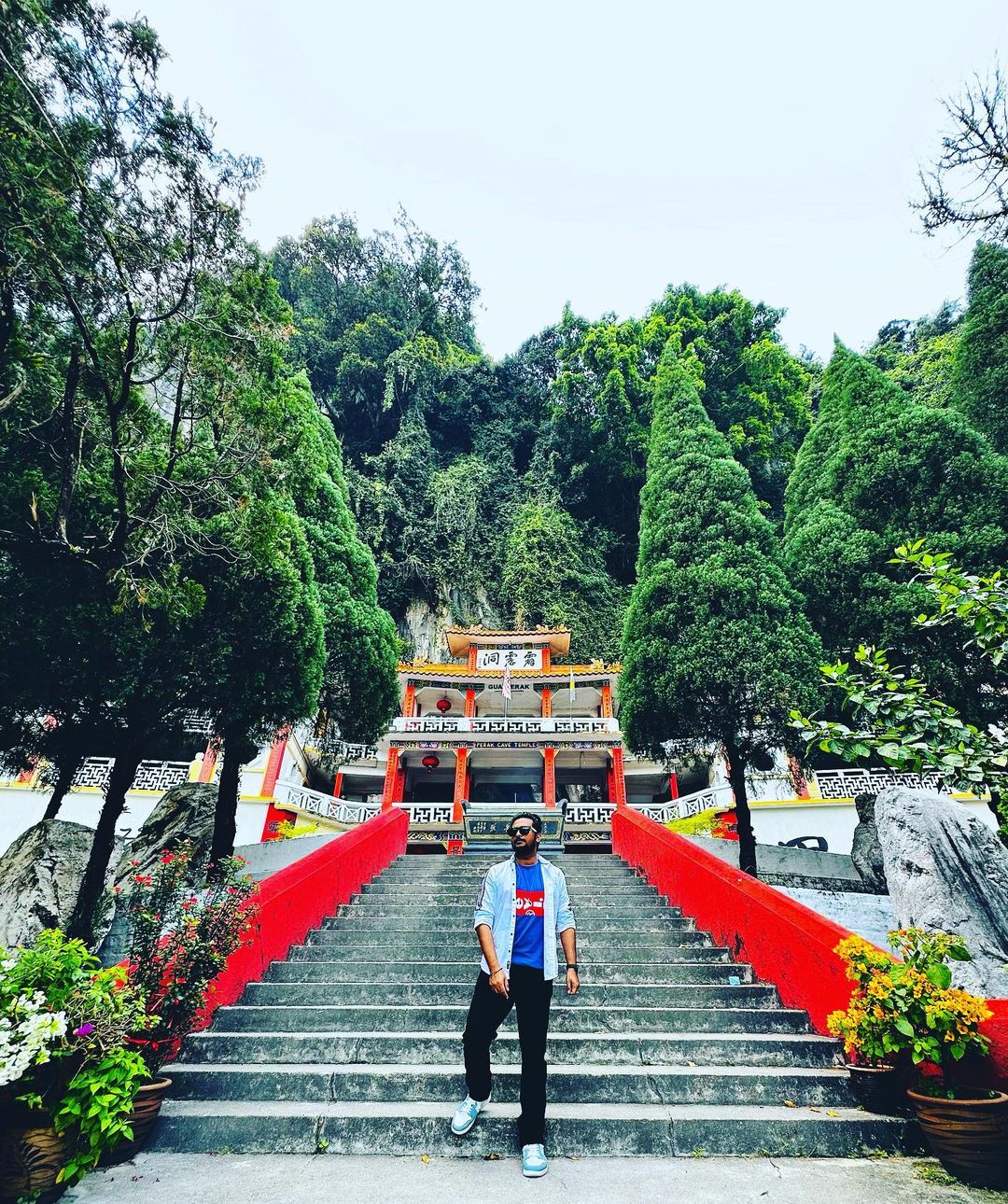
Image credit: @sirf_sudhanshu via Instagram
Undoubtedly one of Ipoh’s most renowned cave temples, Perak Tong temple holds an essential place on this list. Its origins trace back to the 1920s when it was discovered by a couple, both Chinese immigrants hailing from the Jiaoling province in China.
From afar, the exterior of this temple stands as a captivating sight – perhaps one of the many reasons contributing to its distinction as the most renowned cave temple in Ipoh.
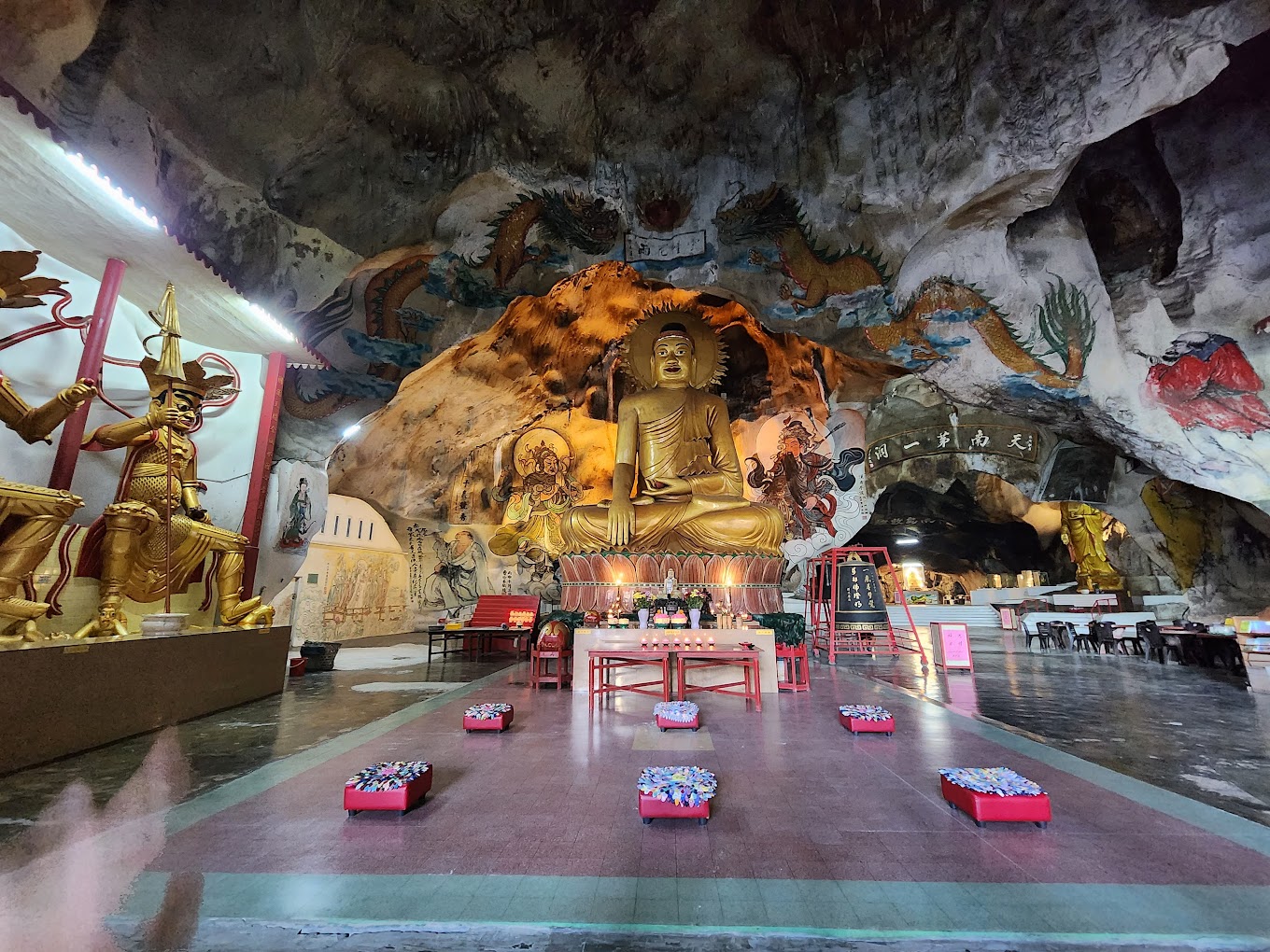
Image credit: Karen Wai via Google Maps
Inside, you’ll be drawn by the grandeur of a 40-foot-tall seated Buddha positioned on a lotus flower, gleaming resplendently in gold. This spacious altar serves as a communal space for devotees to offer their reverence with incense and candles.
If you tilt your head up, you’ll be treated to a visual feast of gorgeous murals adorning the cave walls, depicting characters from Buddhist and Chinese mythologies.
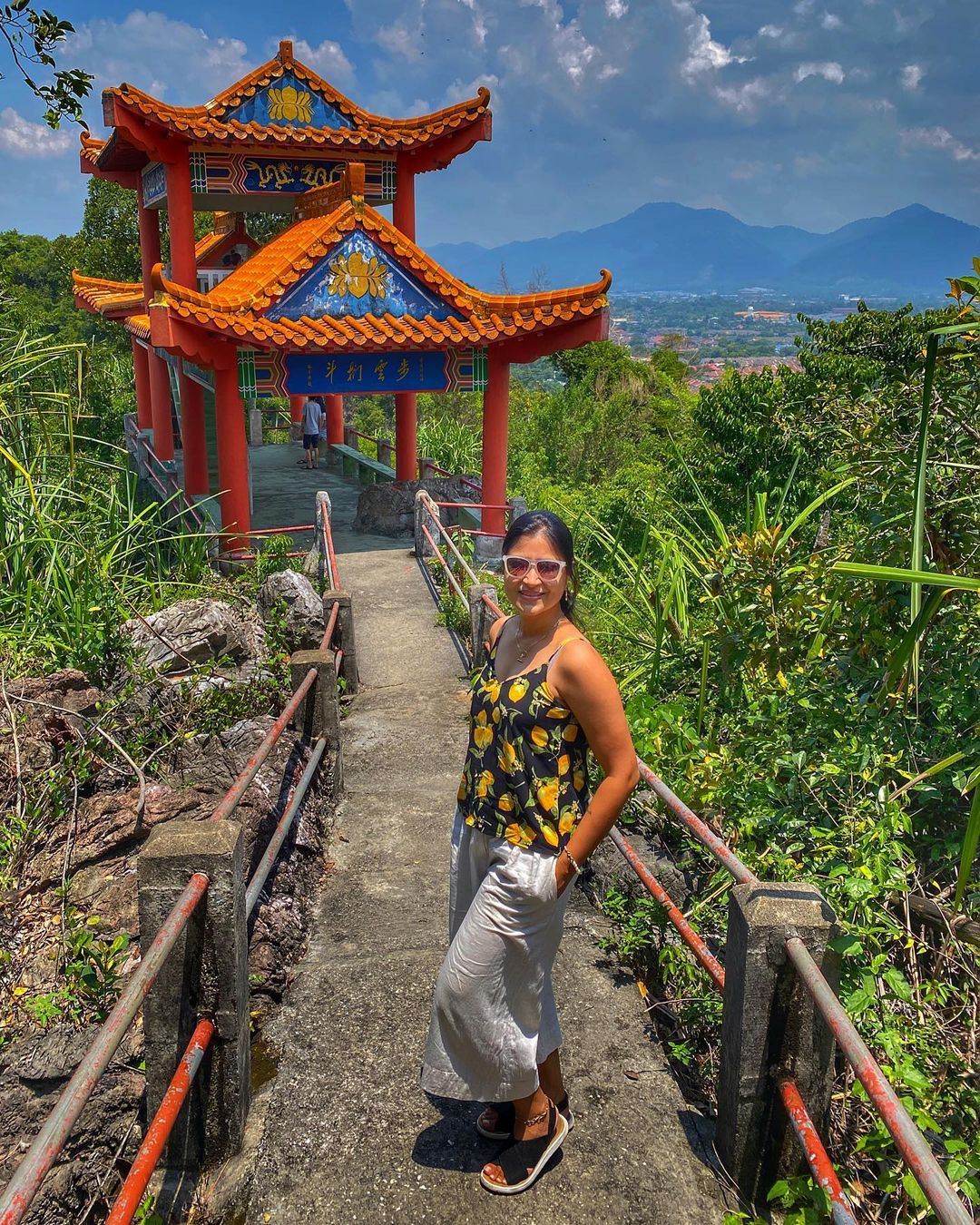
Image credit: @debanjali_pal via Instagram
Next, make your way up the flight of steps behind the main altar. There are approximately 400 steps to climb, but rest spots thoughtfully allocated along the way will provide respite. It’s recommended to bring along a bottle of water to keep yourself hydrated.
Upon reaching the top of the stairs, you’ll be met with an elegant pagoda with benches that offer you the chance to soak in the panoramic views of Ipoh surrounded by lush greenery.
On another note, be sure to also have sunblock in hand especially if you’re planning to visit during the afternoon, as the sun rays can get pretty warm at the top.
Address: Jalan Kuala Kangsar, Kawasan Perindustrian Tasek, 31400 Ipoh, Perak
Opening hours: 8am-5pm, Daily
Contact: 011-2358 4126 | Perak Tong Temple Facebook
8. Kwan Yin Tong Temple
Home to 75 statues of Guan Yin
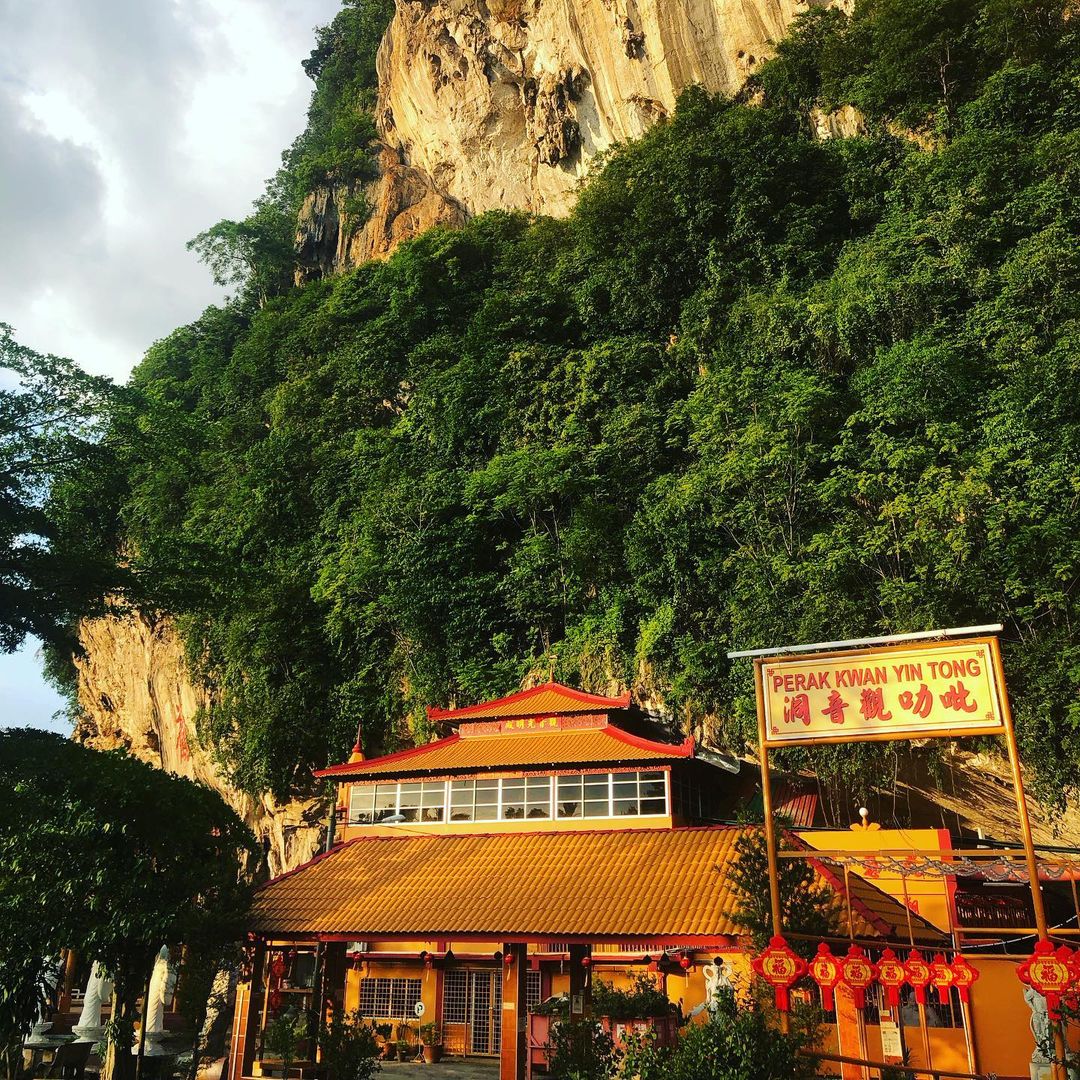
Image credit: @diana_kok via Instagram
Located in Jalan Gopeng, the Kwan Yin Tong temple is a must-visit. Known as the second oldest temple in Perak, this temple is wholly dedicated to the Goddess Guan Yin, so much so that you’ll notice her statue from the moment you set foot inside and throughout your time in this temple.
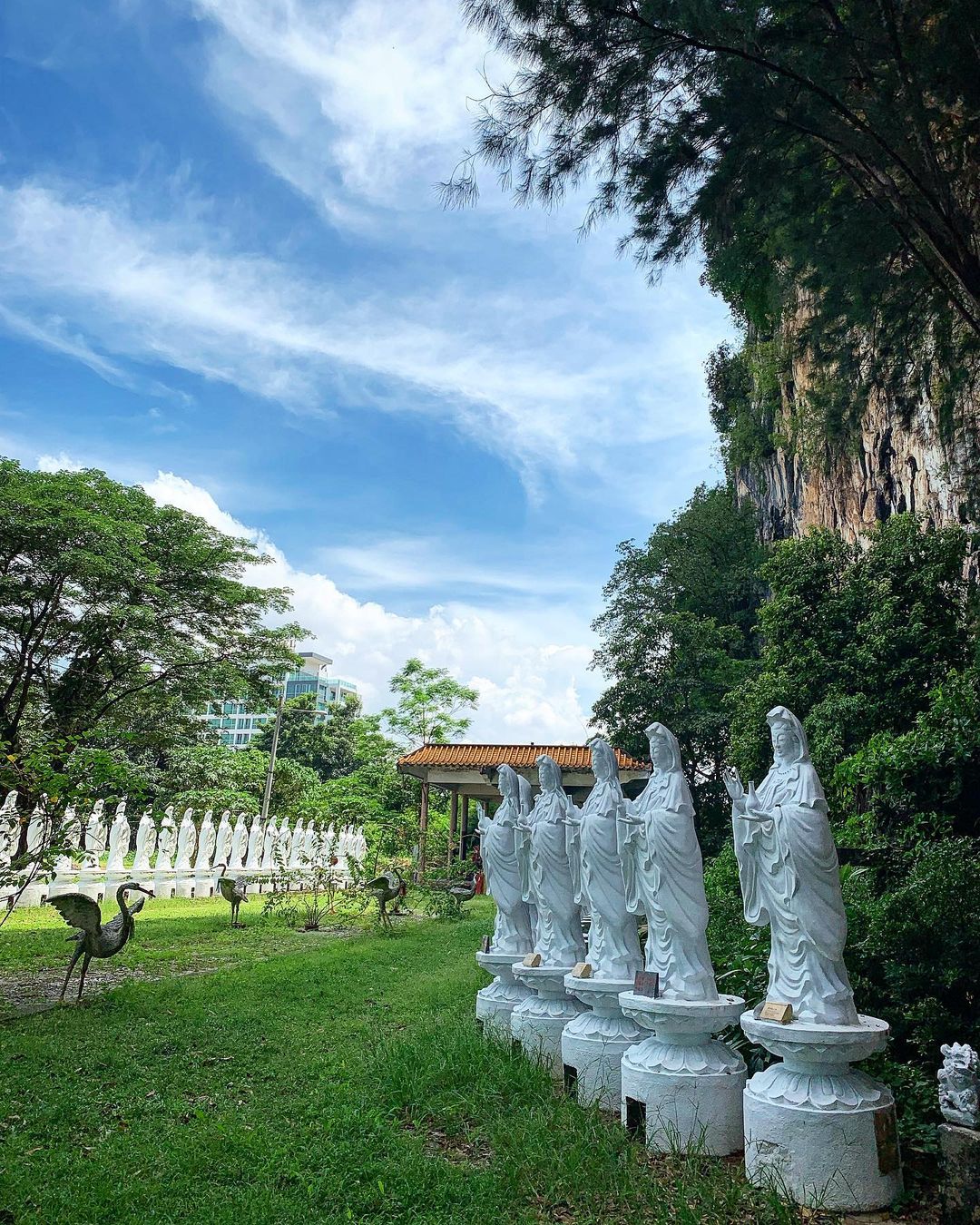
Image credit: @coolbois via Instagram
Before entering the main hall, visit the sprawling garden adorned with statues of the goddess. These pristine-white statues encircle the garden area offering an aesthetically pleasing sight to behold.
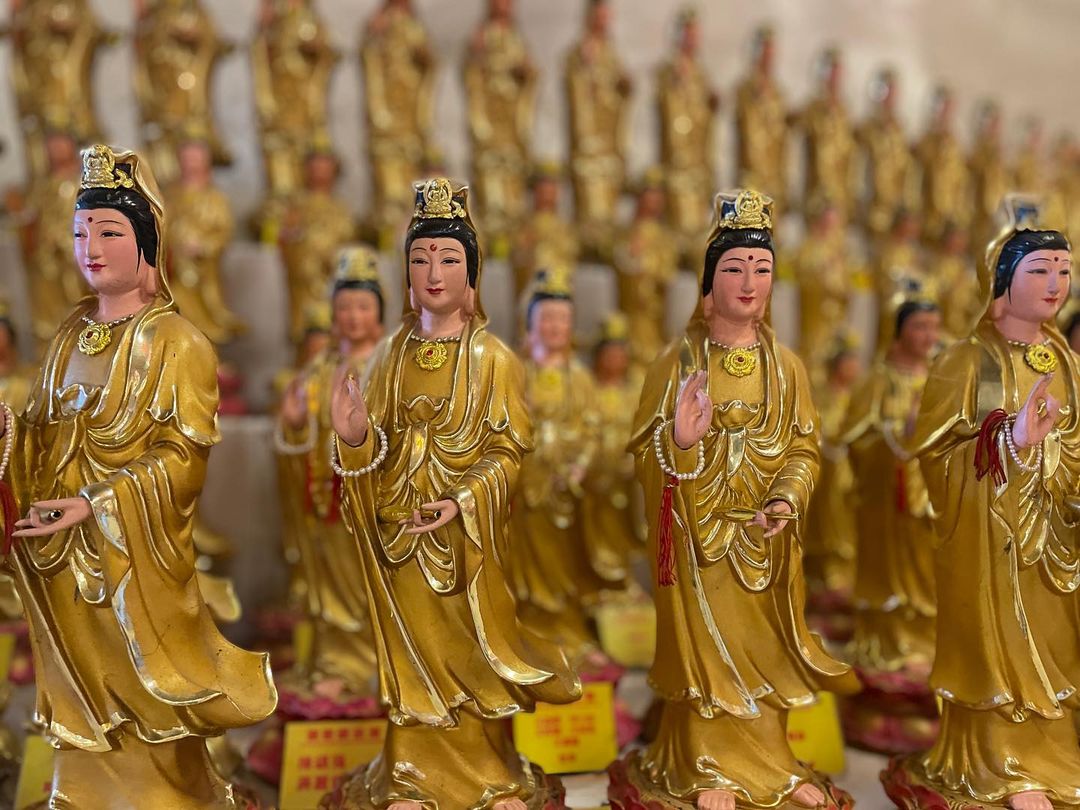
Image credit: @dao_sook via Instagram
This temple houses 75 statues of Guan Yin, and there are hundreds of smaller ones in gold which can be seen inside the temple.
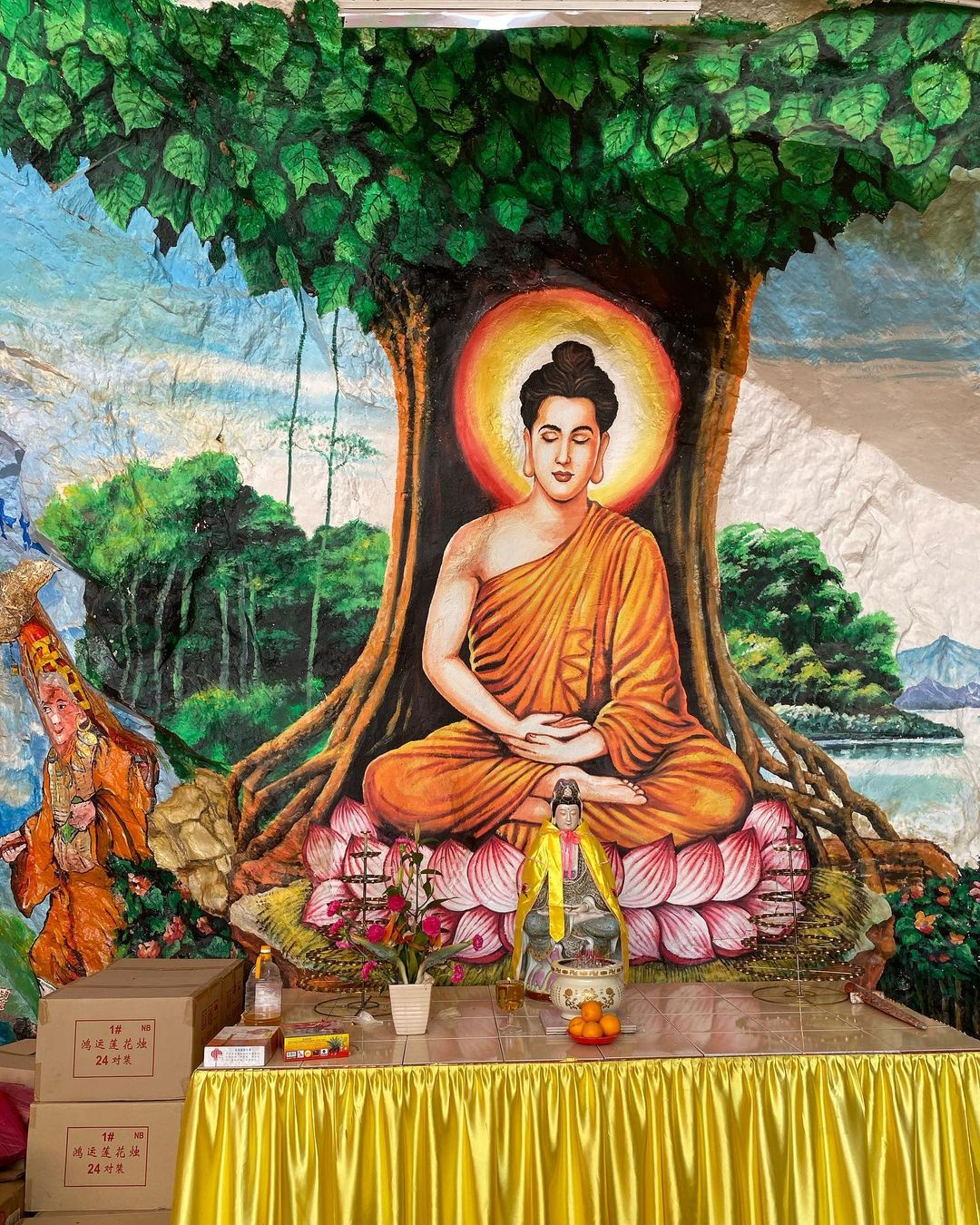
Image credit: @jinyun98 via Instagram
In addition to the central deity, an altar dedicated to Buddha graces the temple’s interior. Adorning the walls is a splendid mural portraying Buddha seated beneath a tree. Here, visitors can light incense and place oranges on the right of the table, right in front of the mural, as a gesture of reverence to the deity.
Address: Lot 21606, Batu 4 1/2, Jalan Gopeng, 31350 Ipoh, Perak
Opening hours: 9am-6pm, Daily
Contact: 05-311 2451 | Kwan Yin Tong Temple Facebook
Must-visit historical cave temples in Ipoh
While Ipoh holds a variety of exciting destinations, there’s no denying that the remarkable cave temples that can be found here set it apart from other cities in Malaysia.
So for your next trip to this quaint city, be sure to visit these sacred temples, which will transport you to an unforgettable cultural experience dating back to yesteryears.
For more temples to visit in Malaysia, check out:
Cover image adapted from: @zacherycsc via Instagram, Where Goes Rose via Blog, & @felicia_ramzi via Instagram
